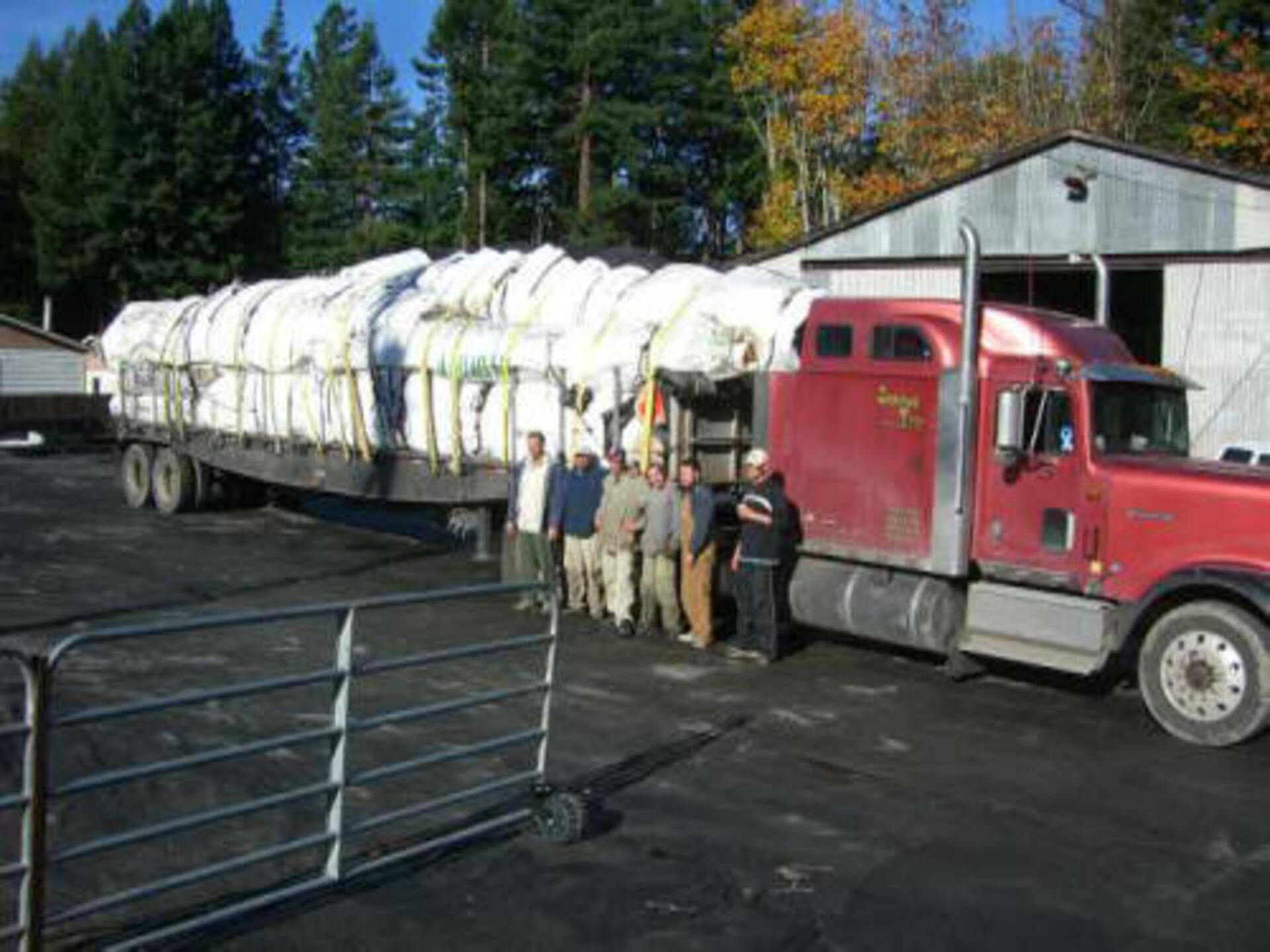
1.) Several AquaDams of varying heights and sizes have been carefully loaded onto a flatbed trailer for transportation to Staten Island, New York. This shipment includes: one 12ft tall 25ft wide 330ft long single closed end (SCE) AquaDam with a connection collar, two 12ft tall 225ft long AquaDams, two 10ft tall 21ft wide 125ft long AquaDams, and two 6ft tall 13ft wide 40ft long AquaDams. AquaDams are delivered in a rolled-up form, similar to a carpet roll on a wooden beam. They are wrapped in a protective covering and include lifting ropes or straps for easy transportation.
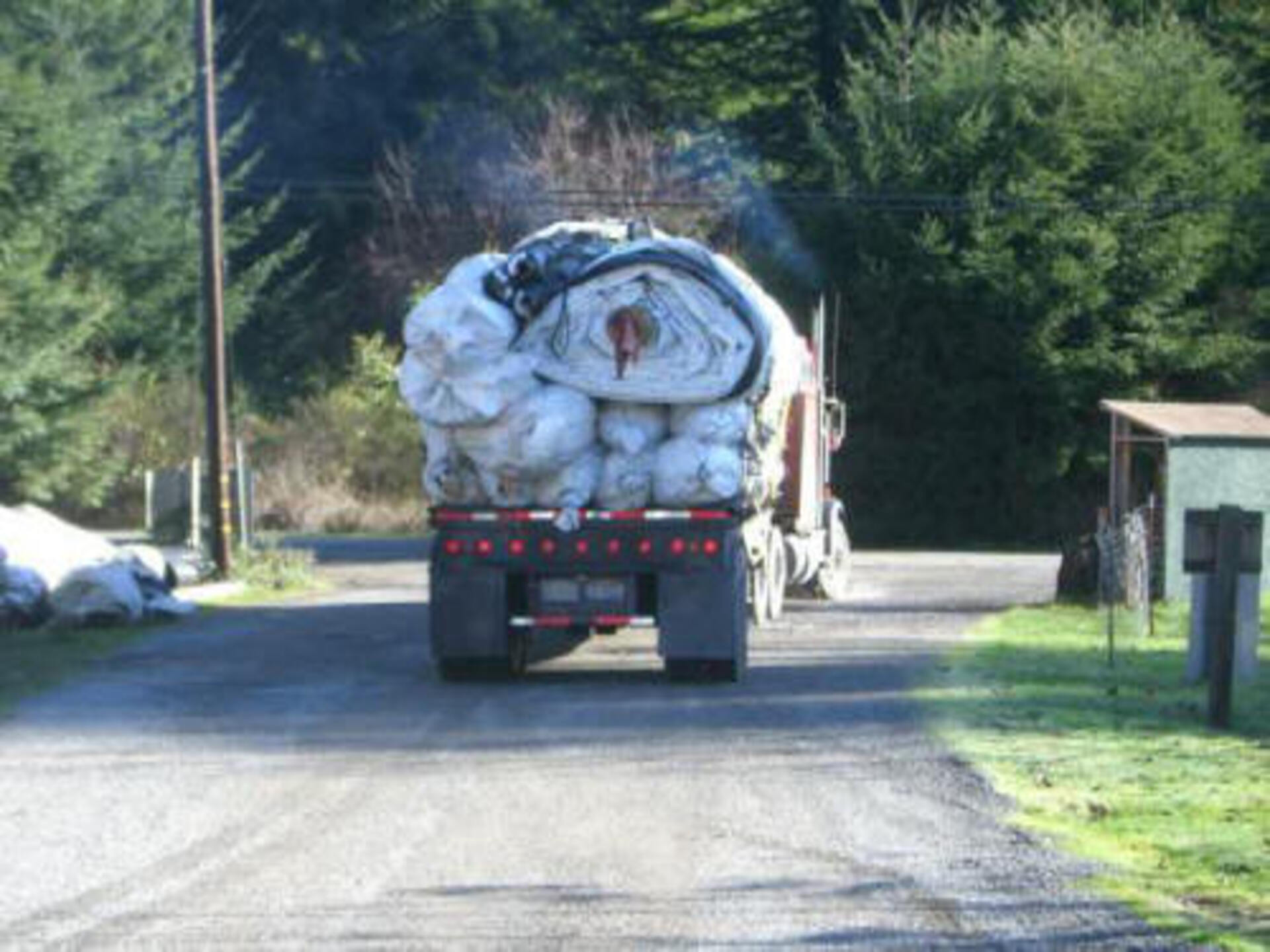
2.) The AquaDams are currently en route to the East from Northern California. These AquaDams will be strategically installed to isolate tidal flats from the Atlantic Ocean's influence, allowing for the removal of contaminants from the soil along Mill Creek.
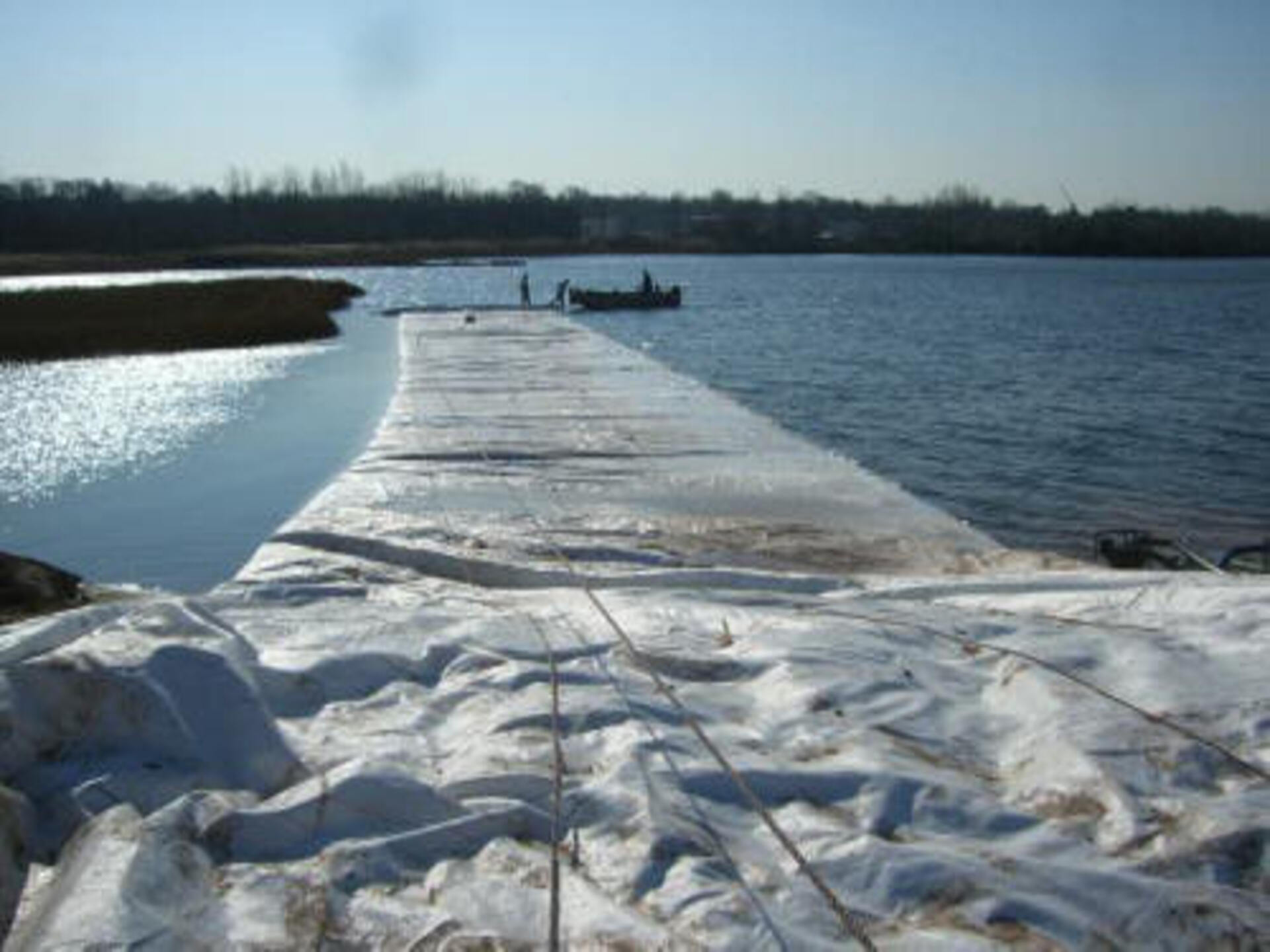
3.) Workers only installed the 12ft tall 330ft long SCE AquaDam on site, leaving the remaining dams for future installation by the contractor as required. Ropes have been anchored at shore, run under the AquaDam, over top of the roll, and back to workers who control the roll while the dam is being filled with water. The ropes are used to hold back the roll, while the unrolled length fills and gains head above the surrounding water.
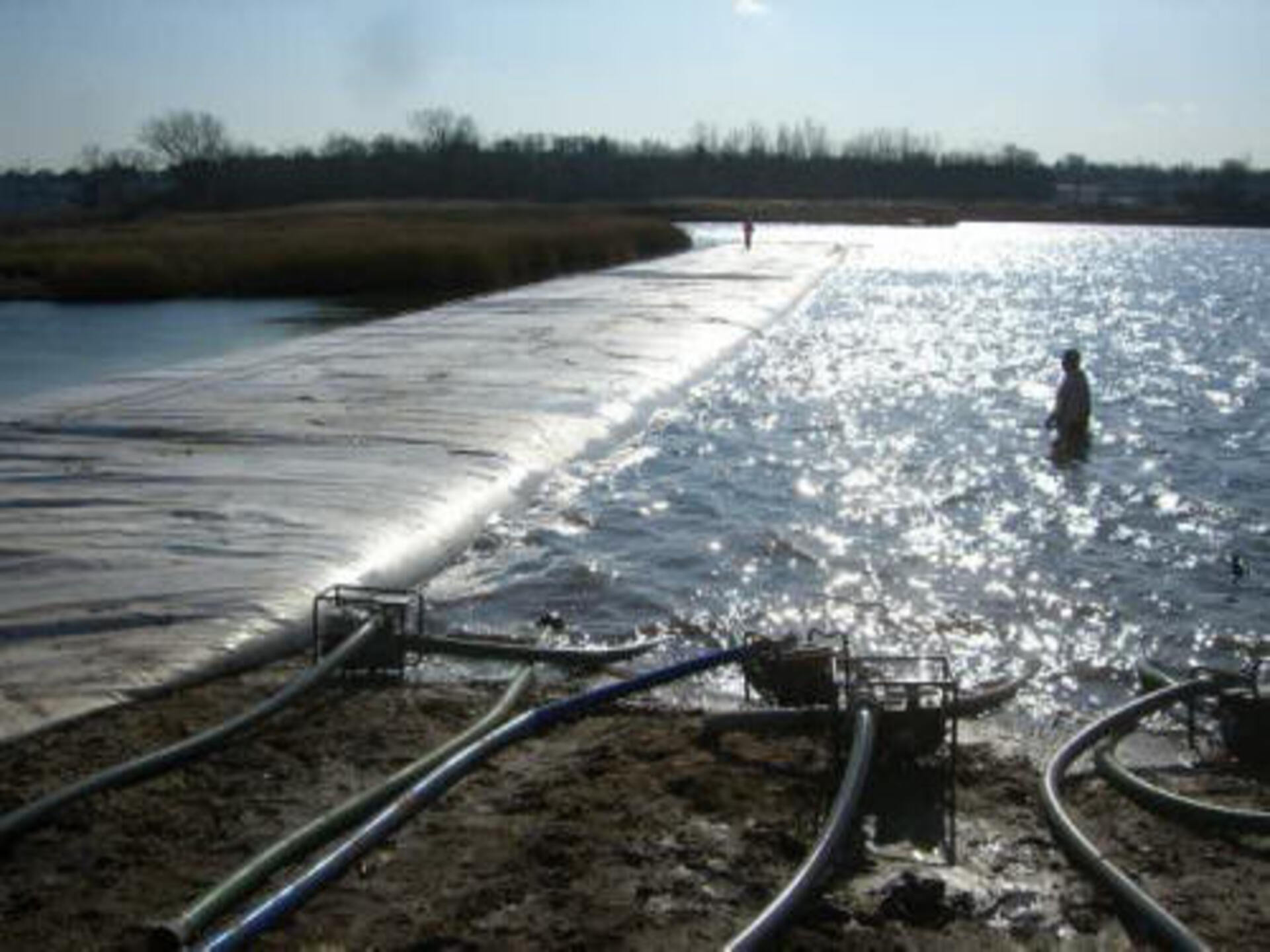
4.) The workers utilized gas-powered pumps to extract water from the Arthur Kill side, as it had a greater abundance of water at that particular time.
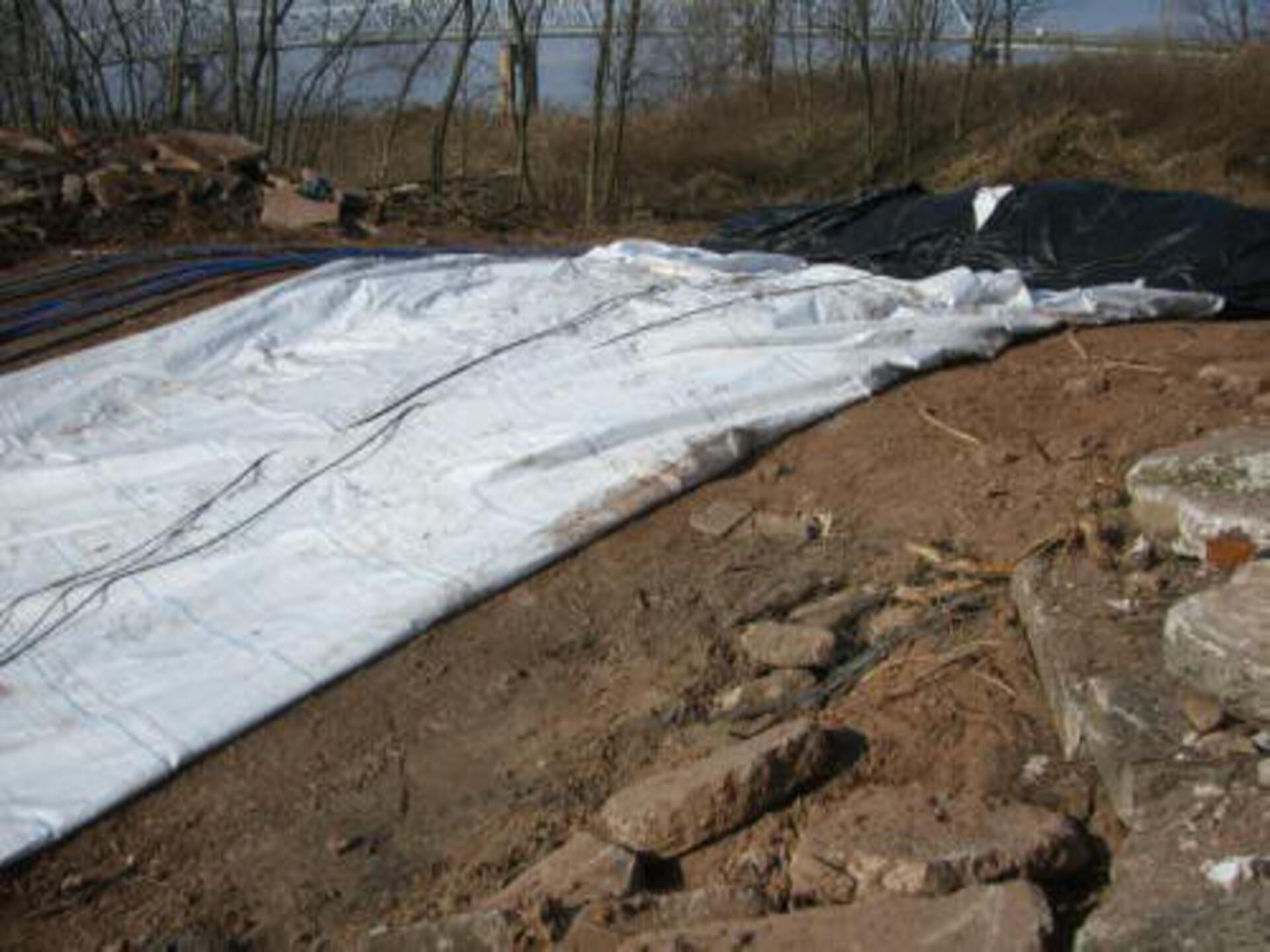
5.) Here we can see the starting bank for the 12ft tall 330ft long SCE AquaDam. To ensure proper installation and functionality of a SCE AquaDam, it is essential to have a starting bank that maintains a higher elevation than the body of the AquaDam. The open end and fill-tubes of the SCE AquaDam must remain elevated above the full height of the dam along its designated path. It is important to note that an AquaDam will only reach its maximum height at the lowest elevation point along its designated path.

6.) Another view of the starting bank, the workers are standing near the open end and fill-tubes of the AquaDam.
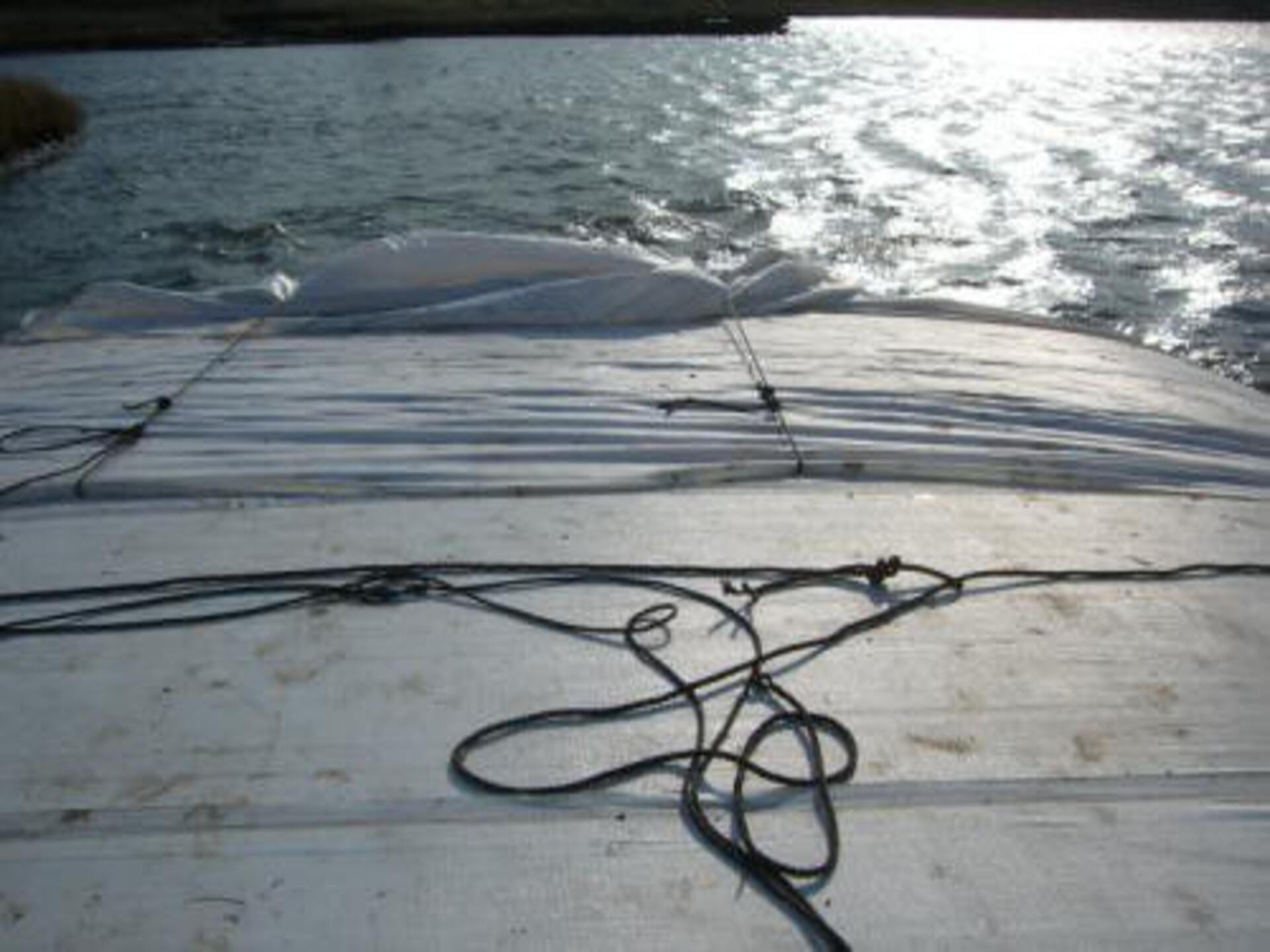
7.) The 12ft tall 330ft long SCE AquaDam has unrolled all the way. Workers have scrunched up and pulled back the connection collar. A connection collar is used to join two AquaDams together.
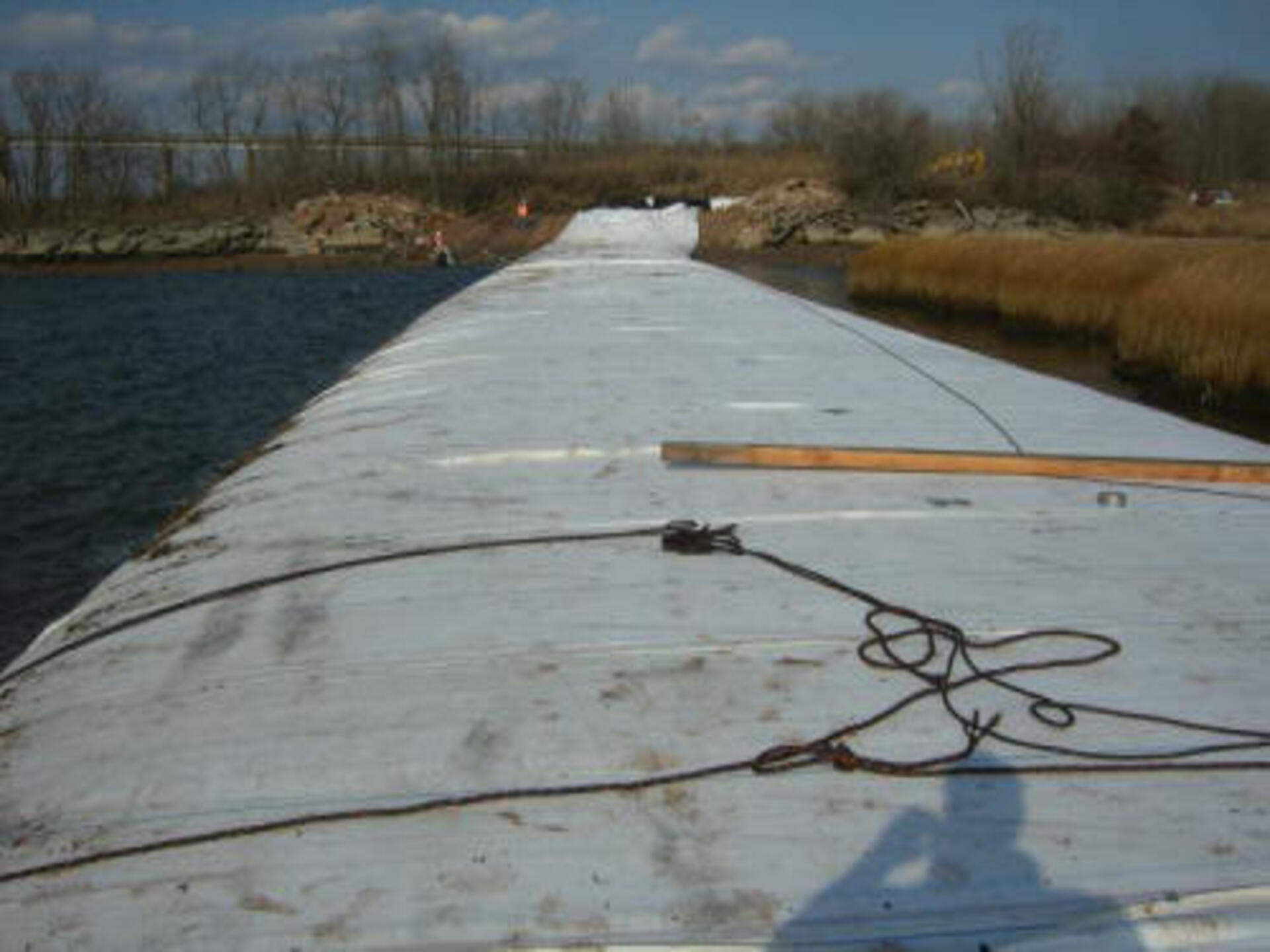
8.) The 12ft tall SCE AquaDam continues to be filled as the tide changes.
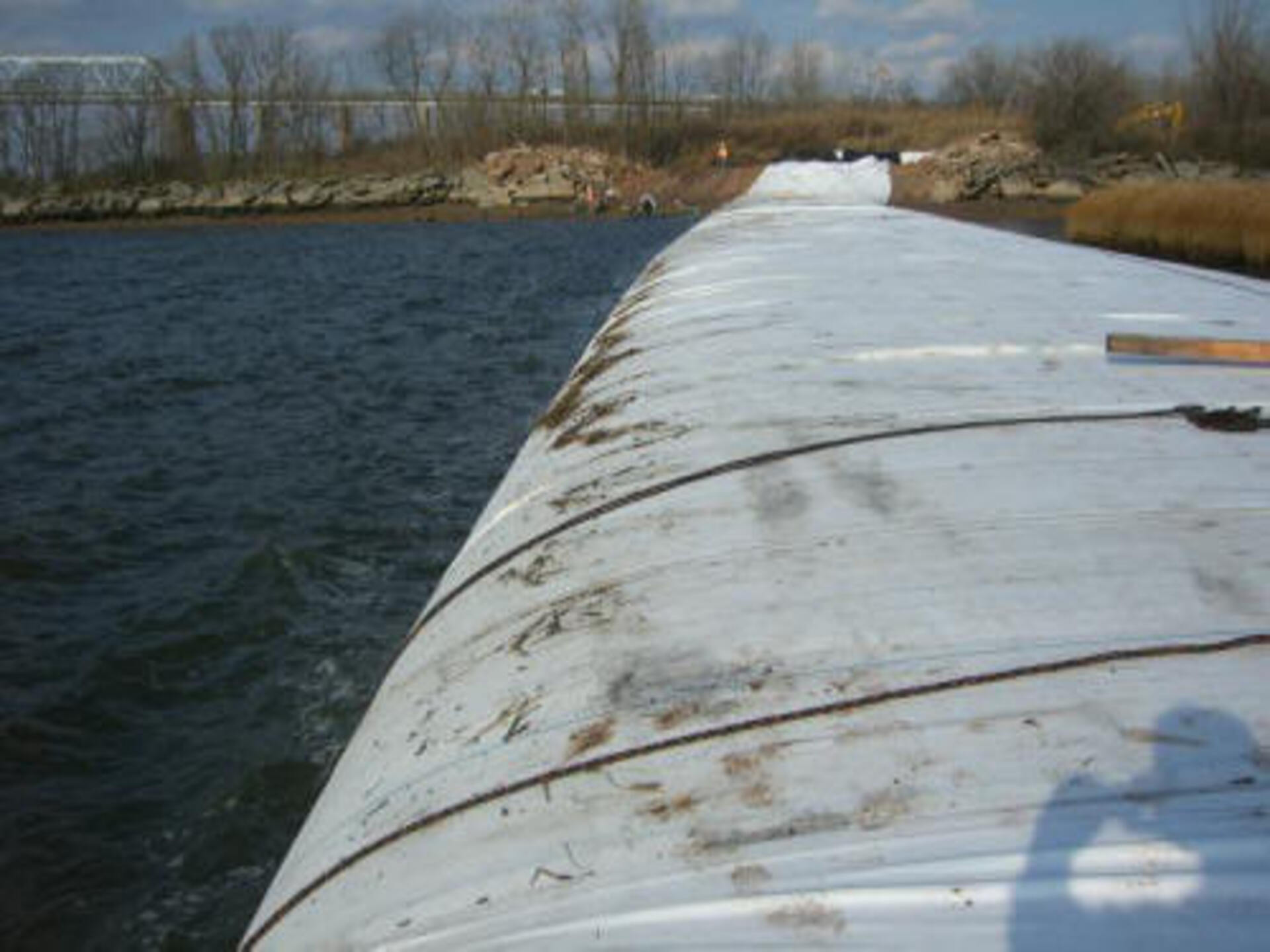
9.) Looking towards Outerbridge Crossing and Arthur Kill.
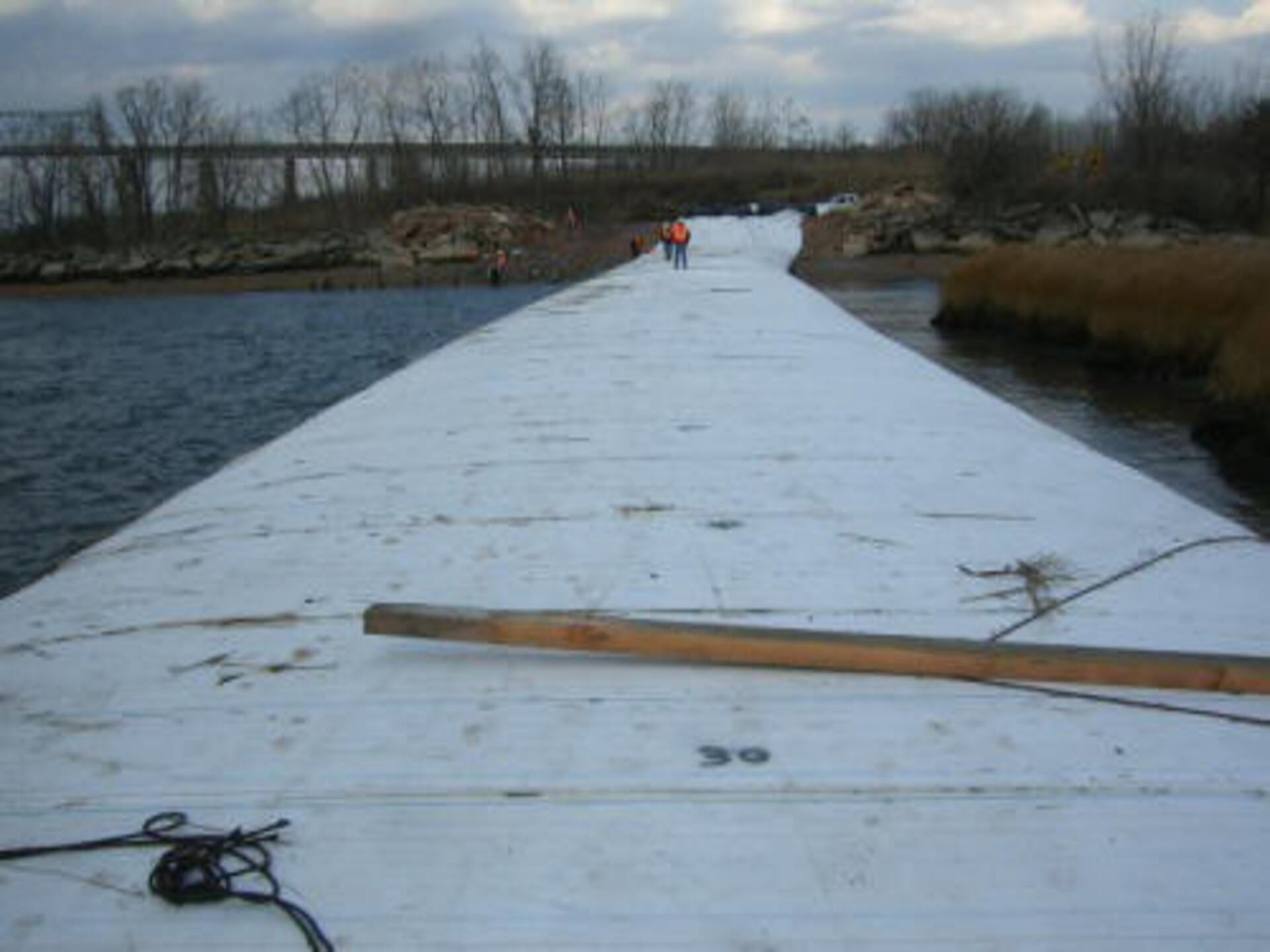
10.) As the AquaDam fills with water, it becomes more stable and can serve as a sturdy staging platform for equipment such as pumps needed for the next AquaDam installation.
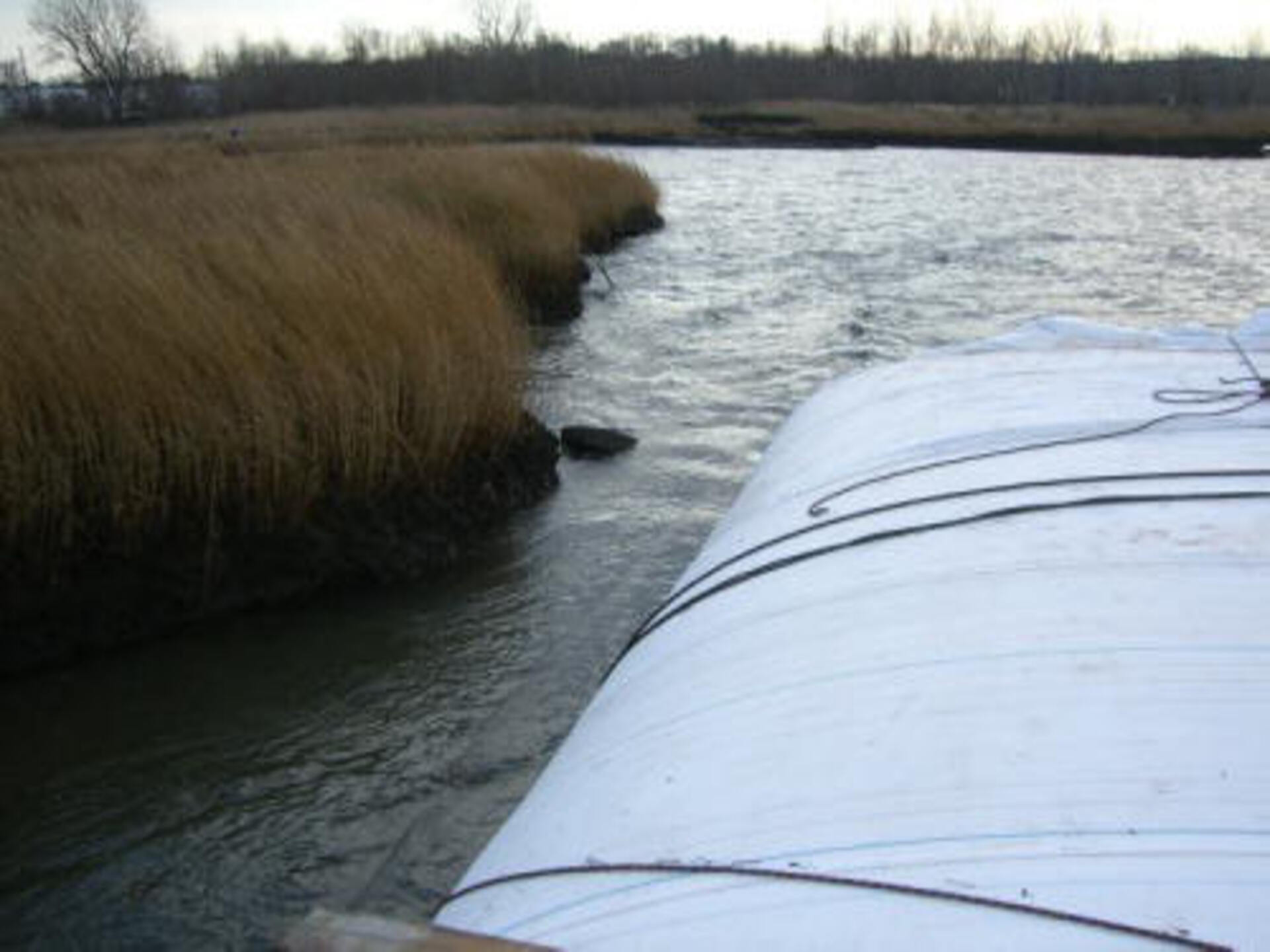
11.) A small gap was left between the small island and the end of the 12ft tall AquaDam.
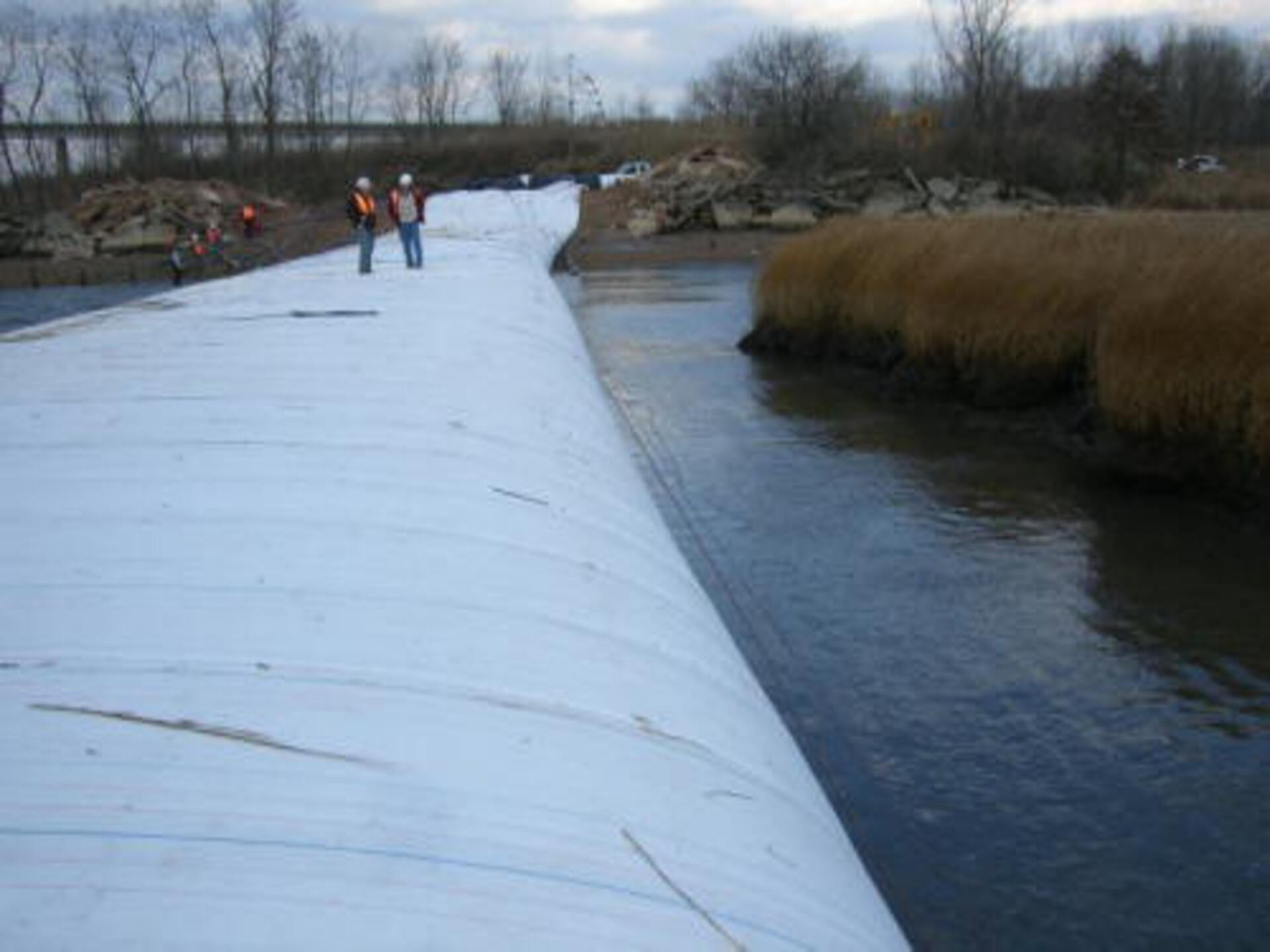
12.) The water on Mill Creek side is low and calm.

13.) The water on Arthur Kill side is deeper and choppy.
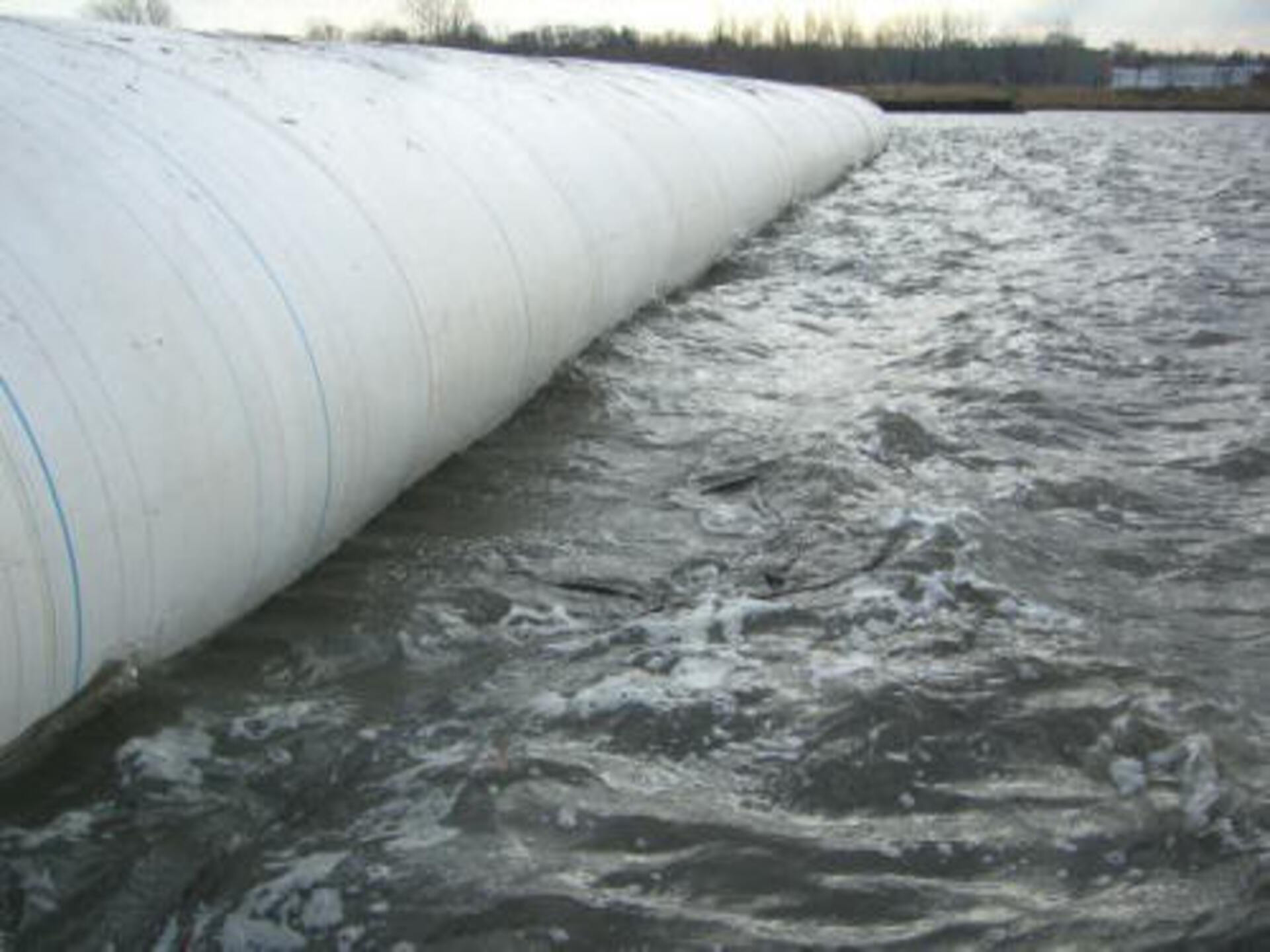
14.) A close up photo of small waves pounding up against the 12ft tall AquaDam.
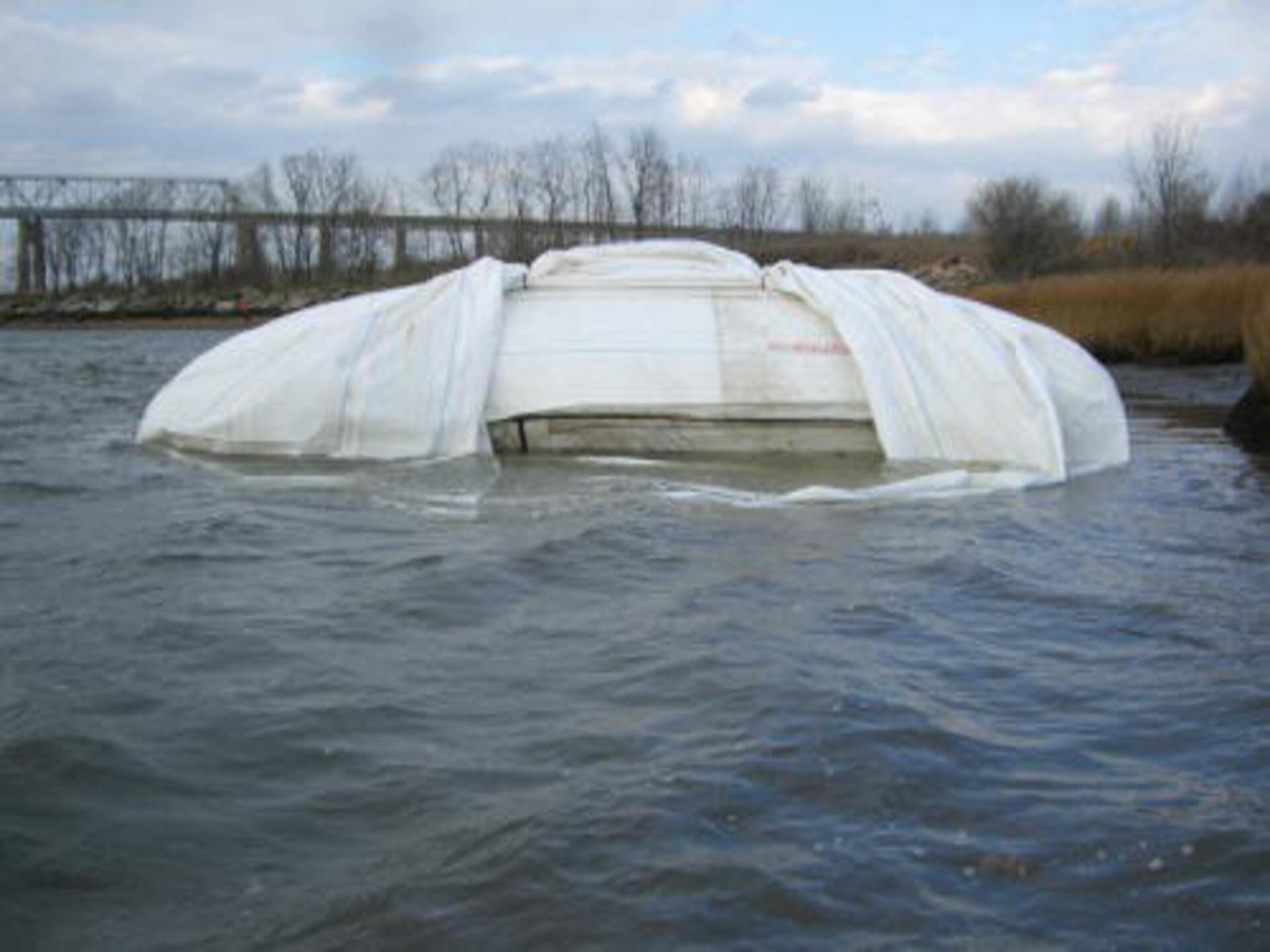
15.) Here we can see the closed end of the 12ft tall SCE AquaDam exposed because its connection collar has been pulled back.
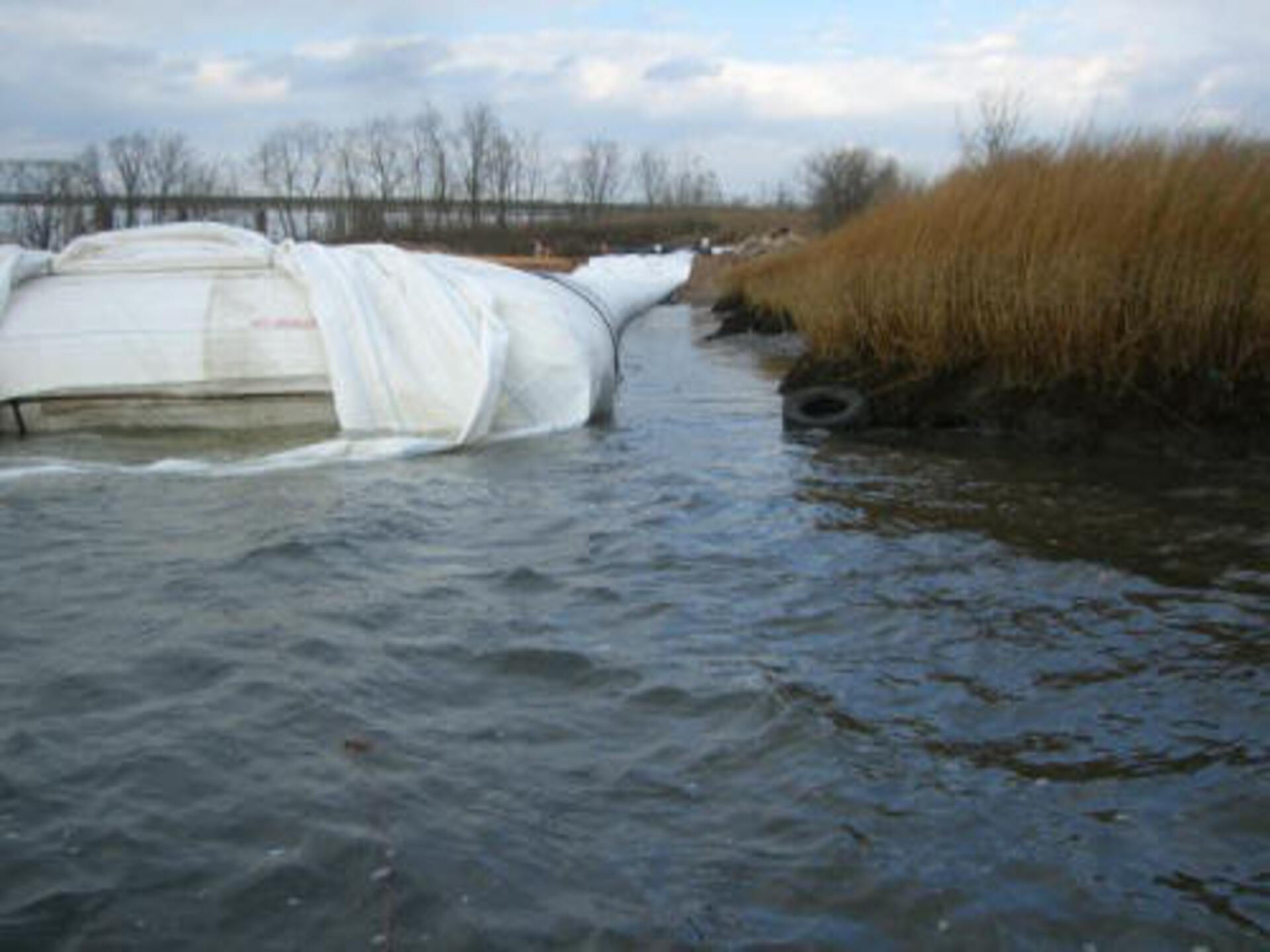
16.) Standing at the closed end looking back at the starting bank.
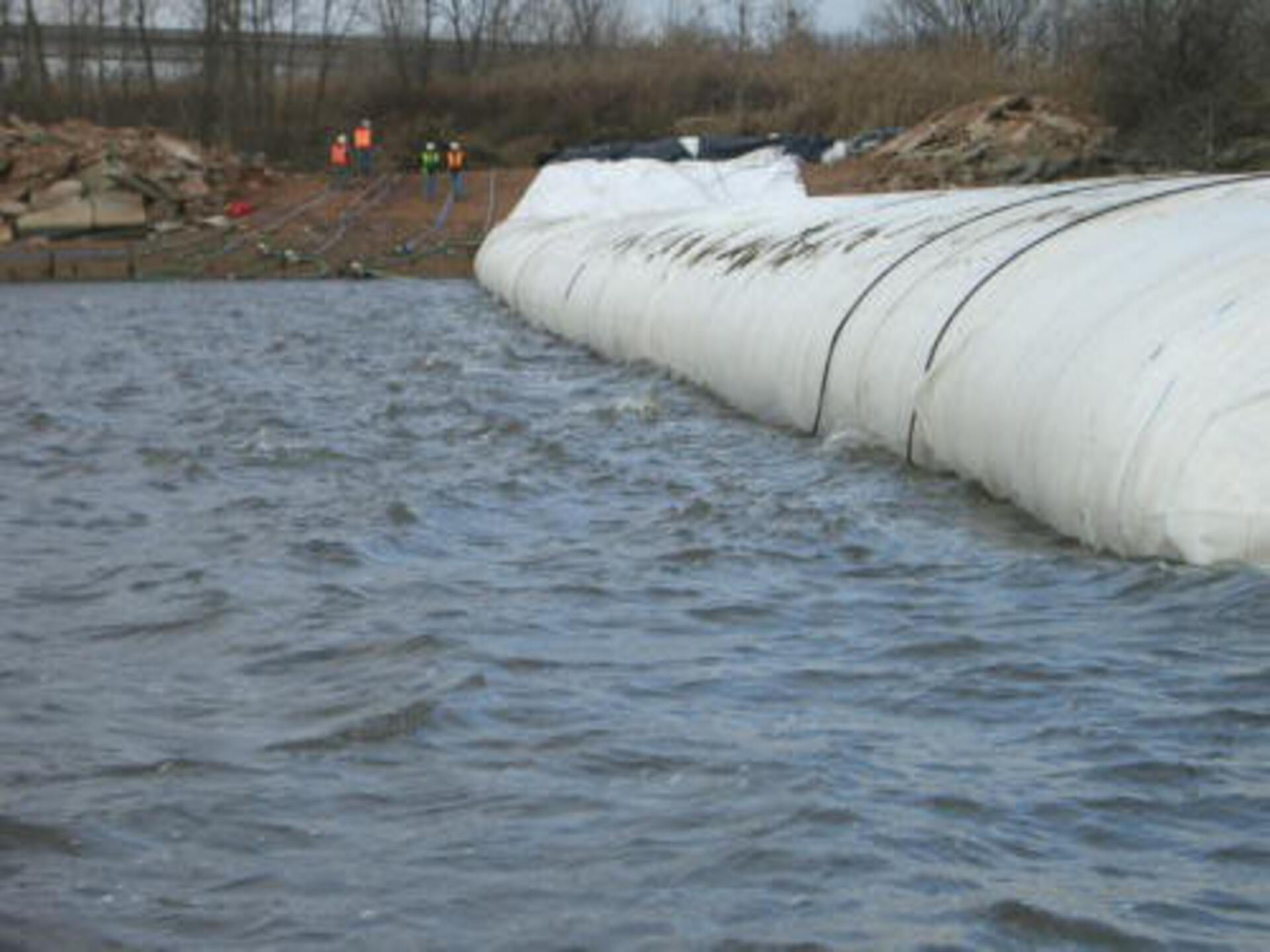
17.) The 12ft tall AquaDam is getting close to being completely filled with water.
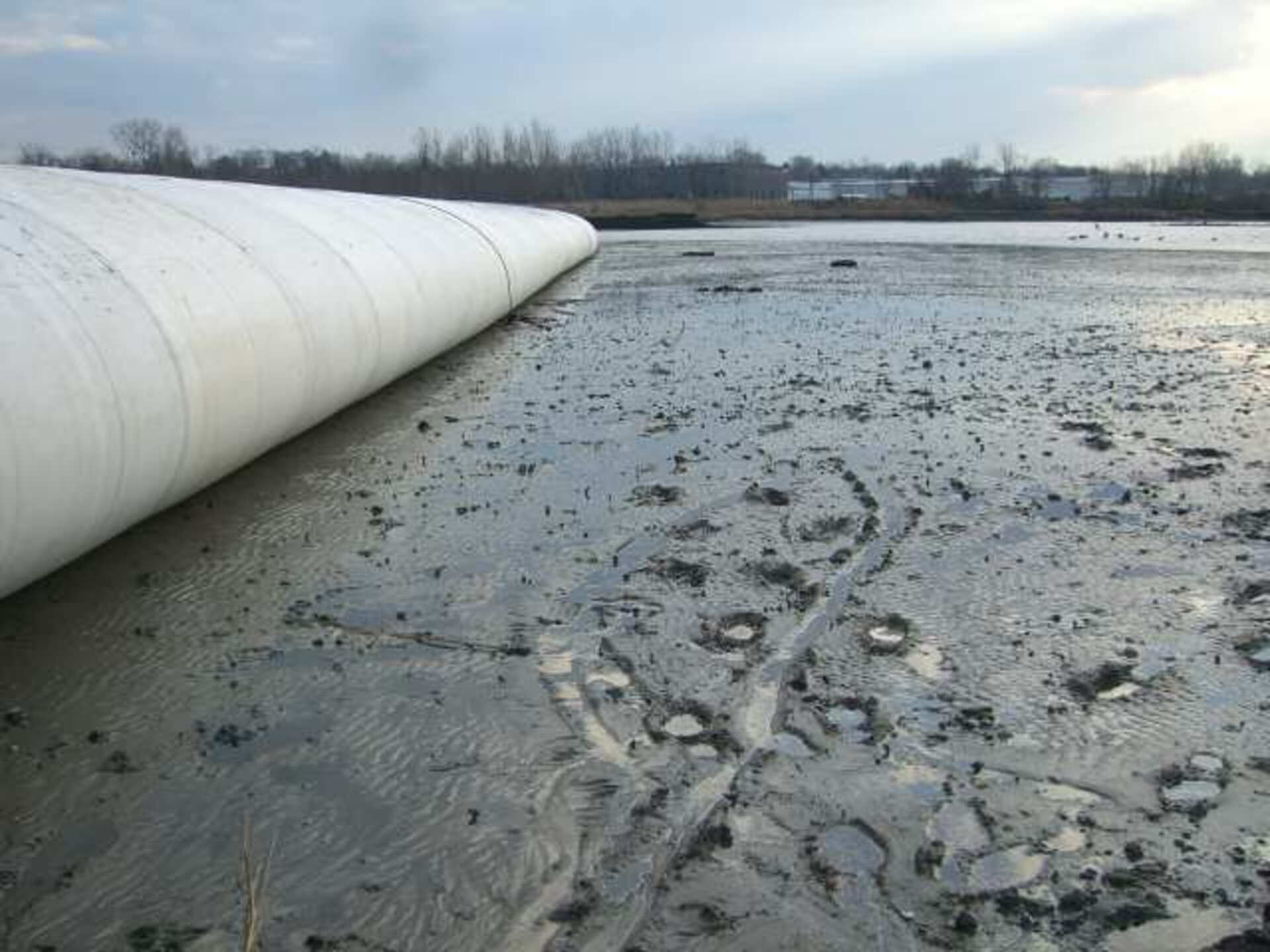
18.) At low tide the 12ft tall AquaDam was not holding back any water. The weight of a filled AquaDam may displace soft mud. Soft mud depths must be included with the maximum controllable water depth.
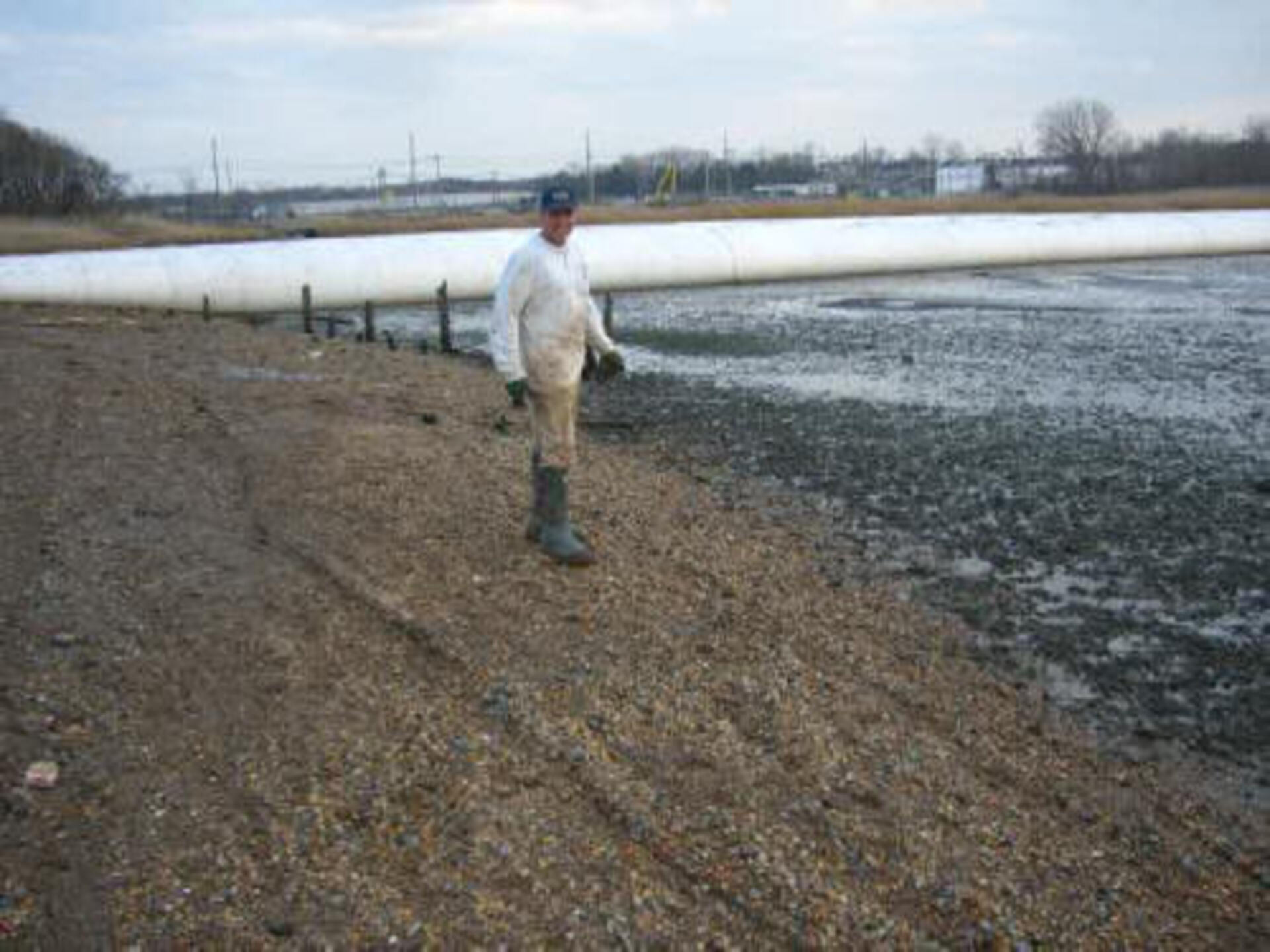
19.) The 12ft tall 330ft long SCE AquaDam is full and it is low tide. The worker is pleased as they have successfully obtained sufficient water to fill the dam before the tide receded.
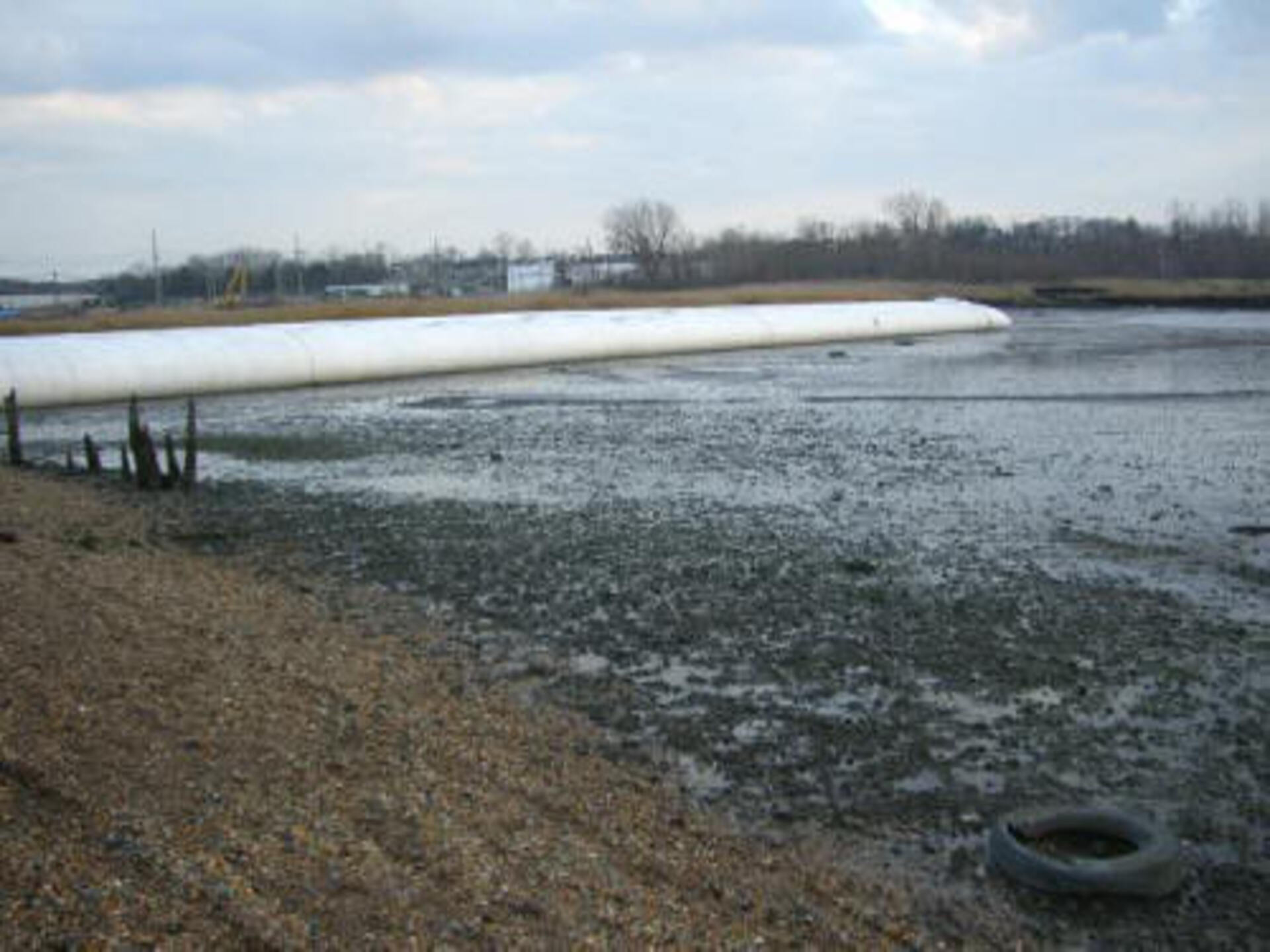
20.) The AquaDam is up and working.

21.) This was the beginning of the installation of the rest of the AquaDams at a later date. Three more additional AquaDams were included with this trip a 10ft tall by 300ft long unit, an 8ft tall 17ft wide 120ft long unit, and an 8ft tall by 265ft long unit. Another SCE AquaDam has been attached to the connection collar of the first 12ft tall 330ft long SCE AquaDam. The fill-tubes are the material in black.

22.) At low tide there was not much water on the work area side of the AquaDams.
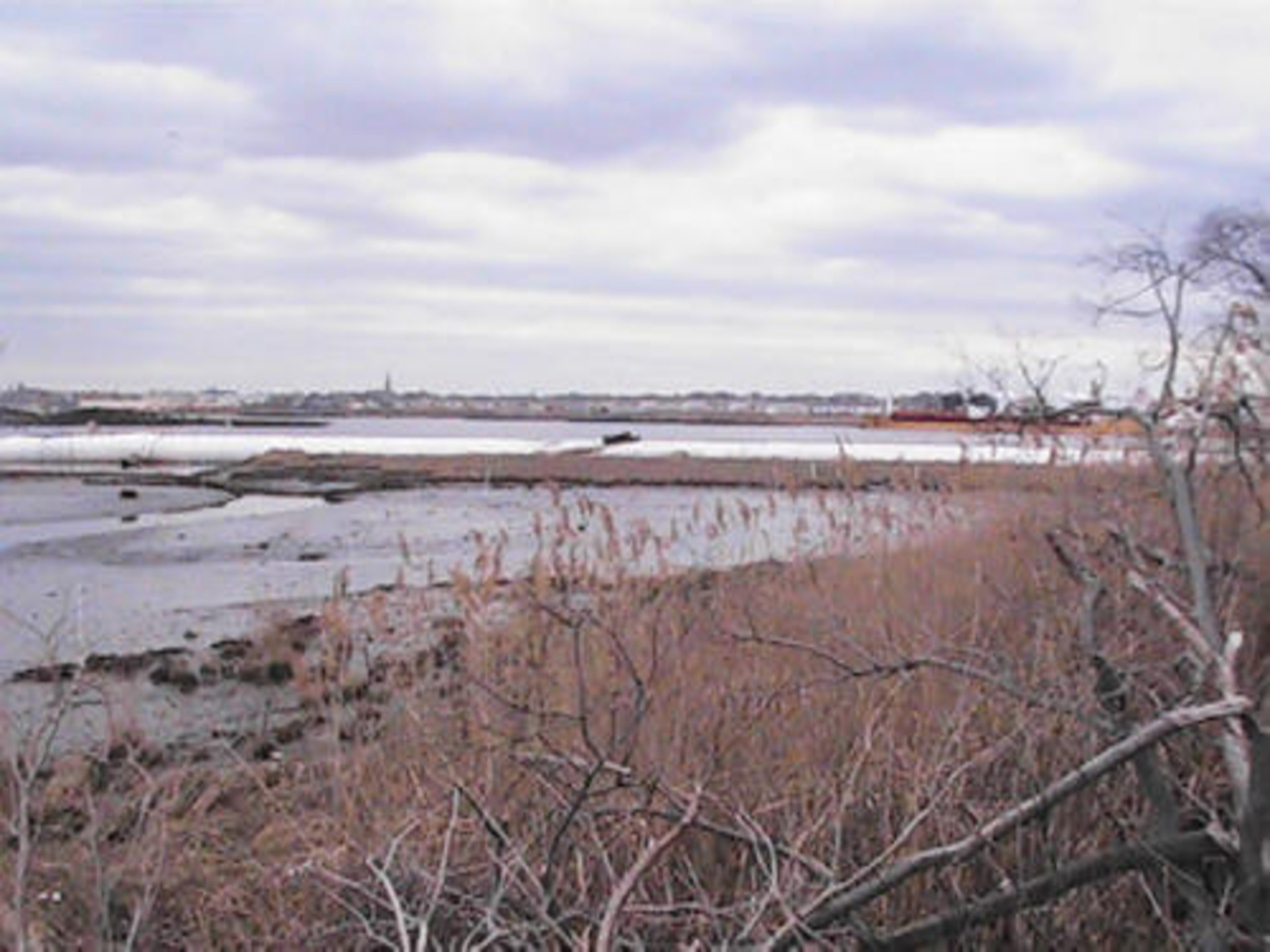
23.) Standing on Mill Creek side looking West towards Arthur Kill.

24.) Standing on Mill Creek side looking South towards an old wreckage site.
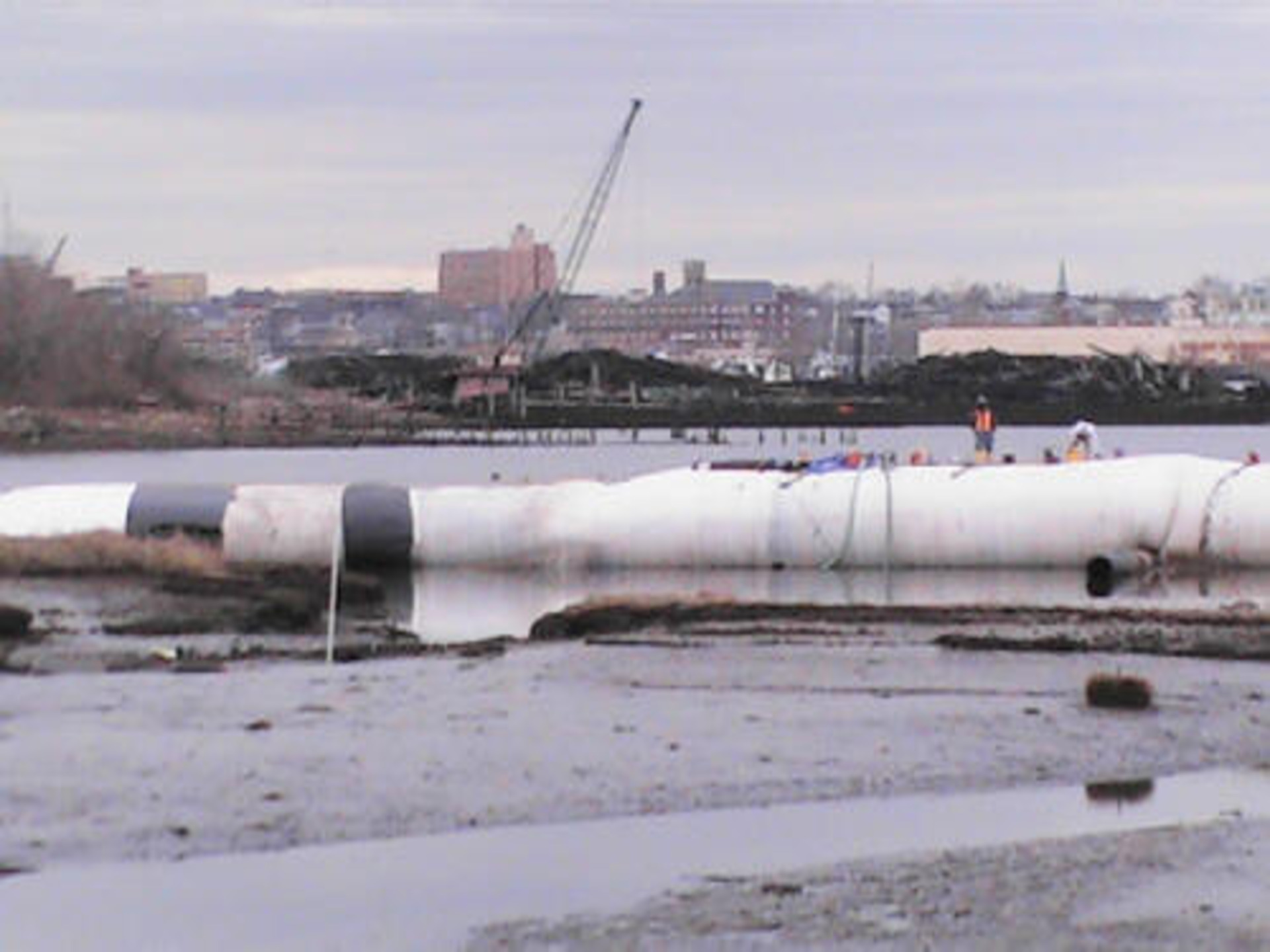
25.) A photo of the AquaDam cofferdam system being installed. Workers are atop of one unit, while filling another.

26.) Now that this AquaDam is almost full, workers will bring another one to attach to the closed end of the almost full one with a connection collar.

27.) A worker comfortably keeps his hands warm while standing atop of the AquaDam.

28.) Pumps are set up near the closed end of one AquaDam and used to fill the next dam.

29.) Plenty of rope should be available when installing an AquaDam.
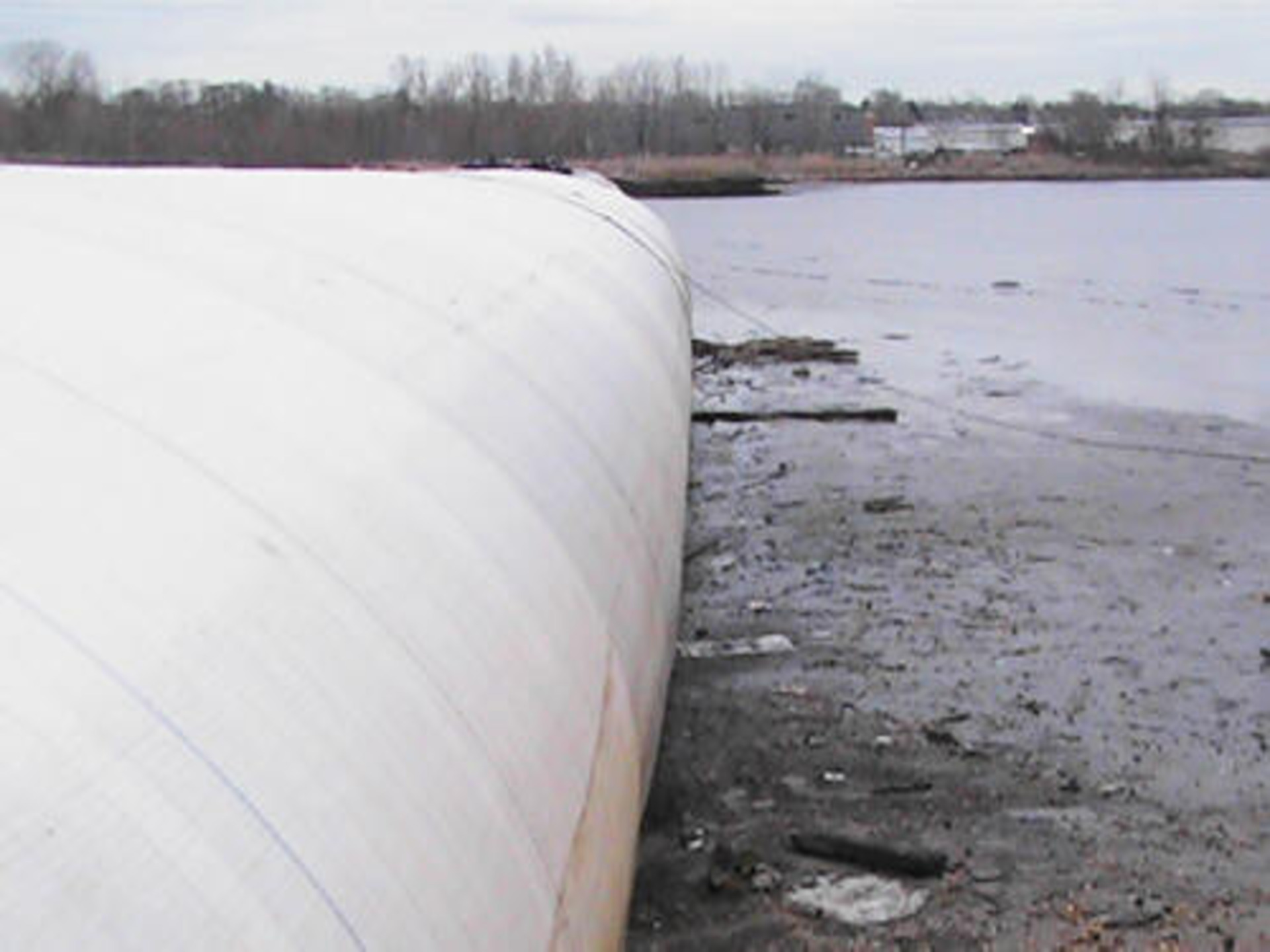
30.) The fluctuation in tidal water depth, from high tide to low tide, is clearly evident by the water mark left along the side of the AquaDam.
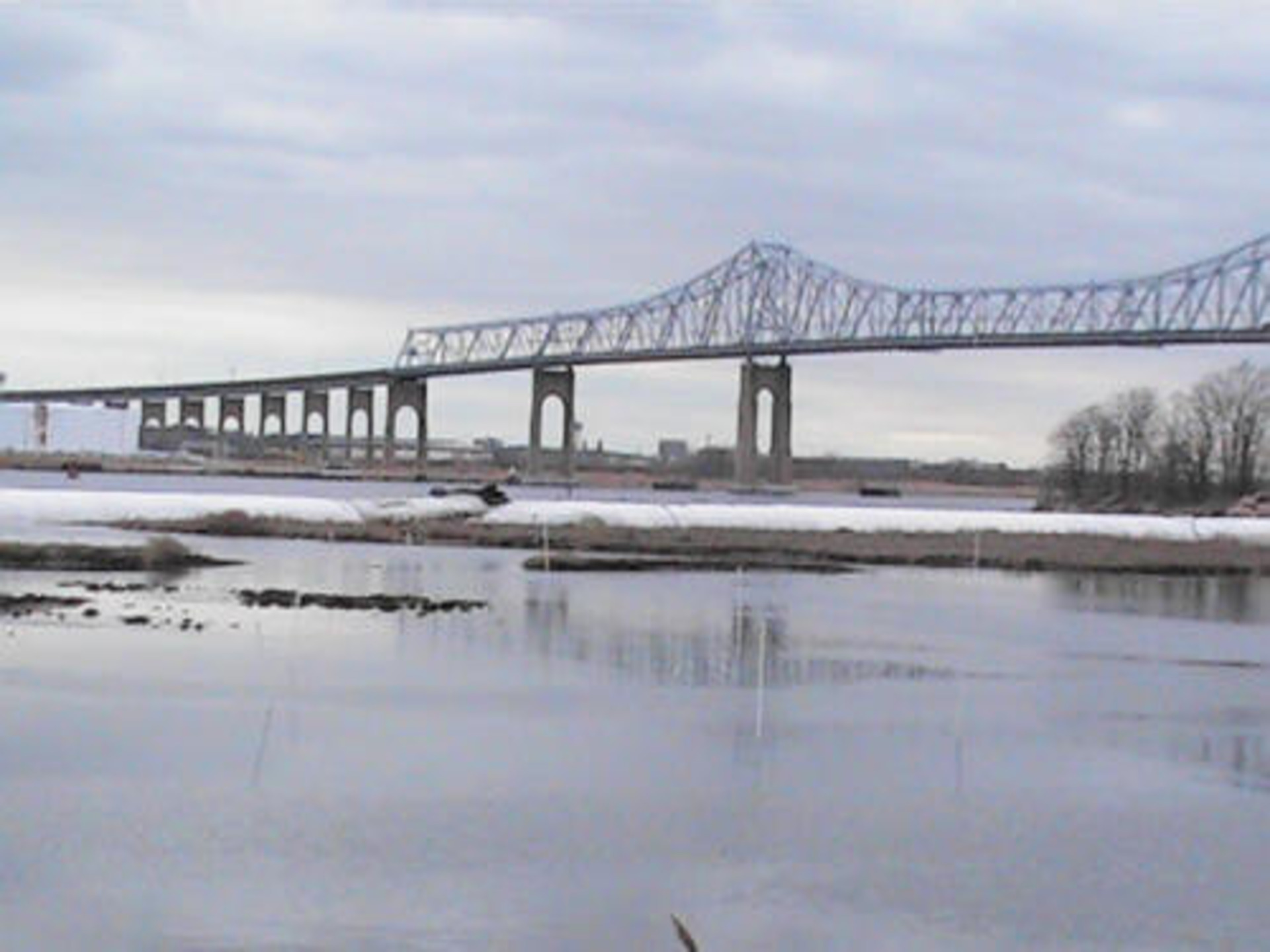
31.) A great view of Outerbridge Crossing, which is one of the bridges that connects New Jersey and New York.

32.) Looking North from within the work area.
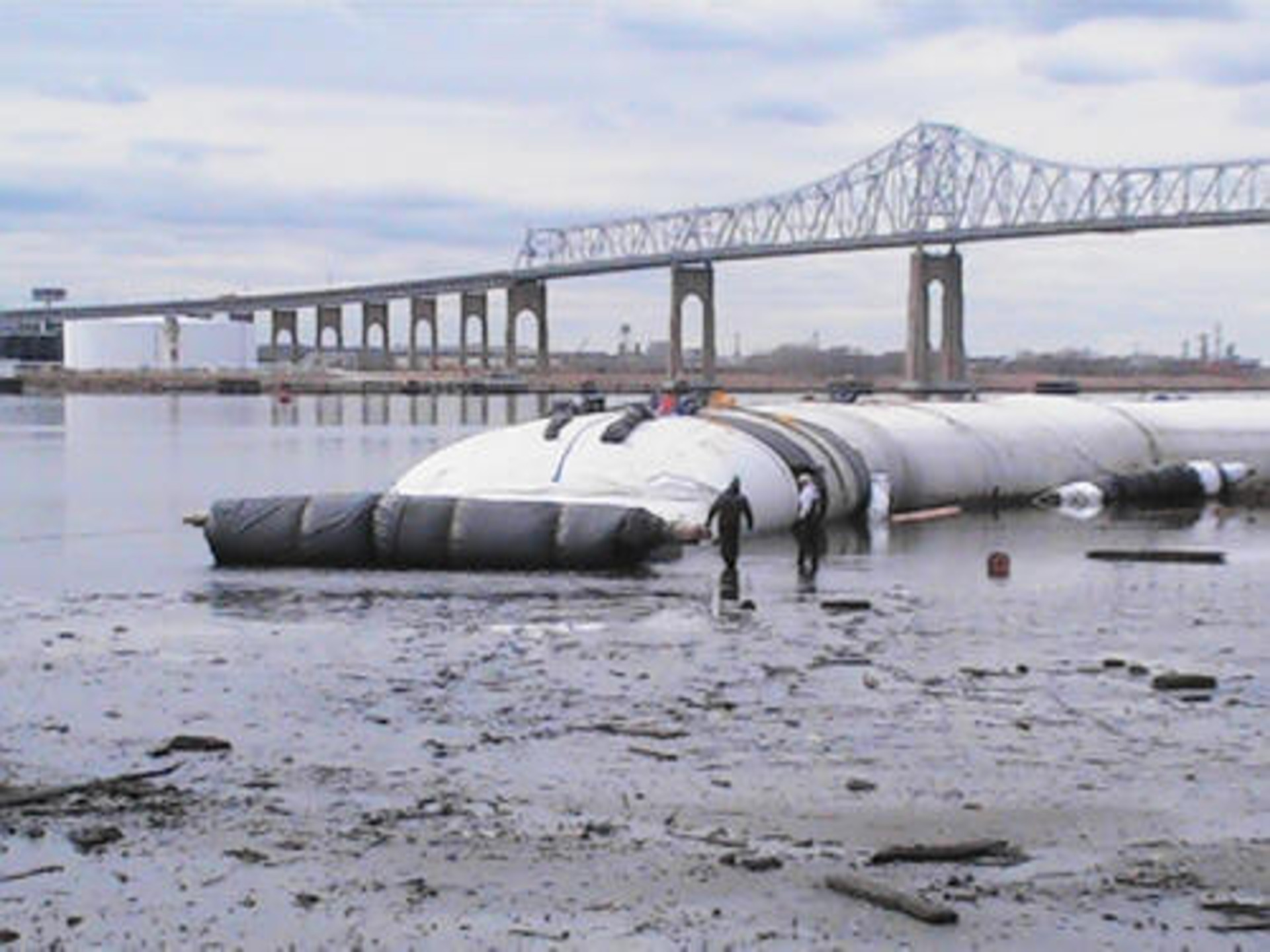
33.) The next AquaDam for the main cofferdam system has been put in place and set up for filling. The fill-tubes of this AquaDam have been brought through the connection collar and had discharge hoses inserted into them. The open end has been bloused out atop the closed end of the other AquaDam, inside the collar. Workers then unrolled enough length to stretch and pull tight the connection collar.
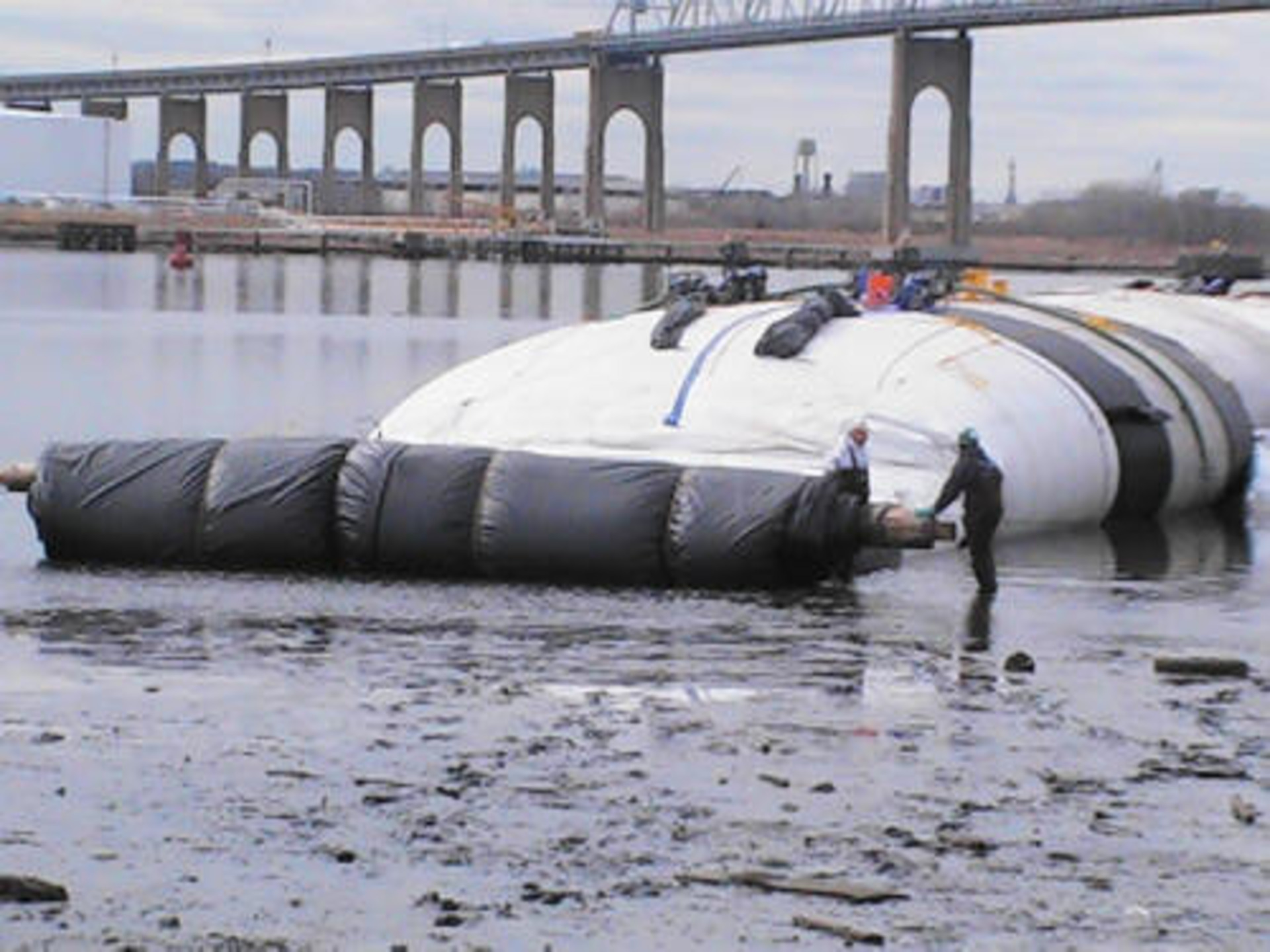
34.) As the pumps fill the AquaDam with water, the water inside will push on the roll end causing the roll to want to unroll. Workers restrain the roll end, with rope, to control the direction and amount of head inside the unrolled length.
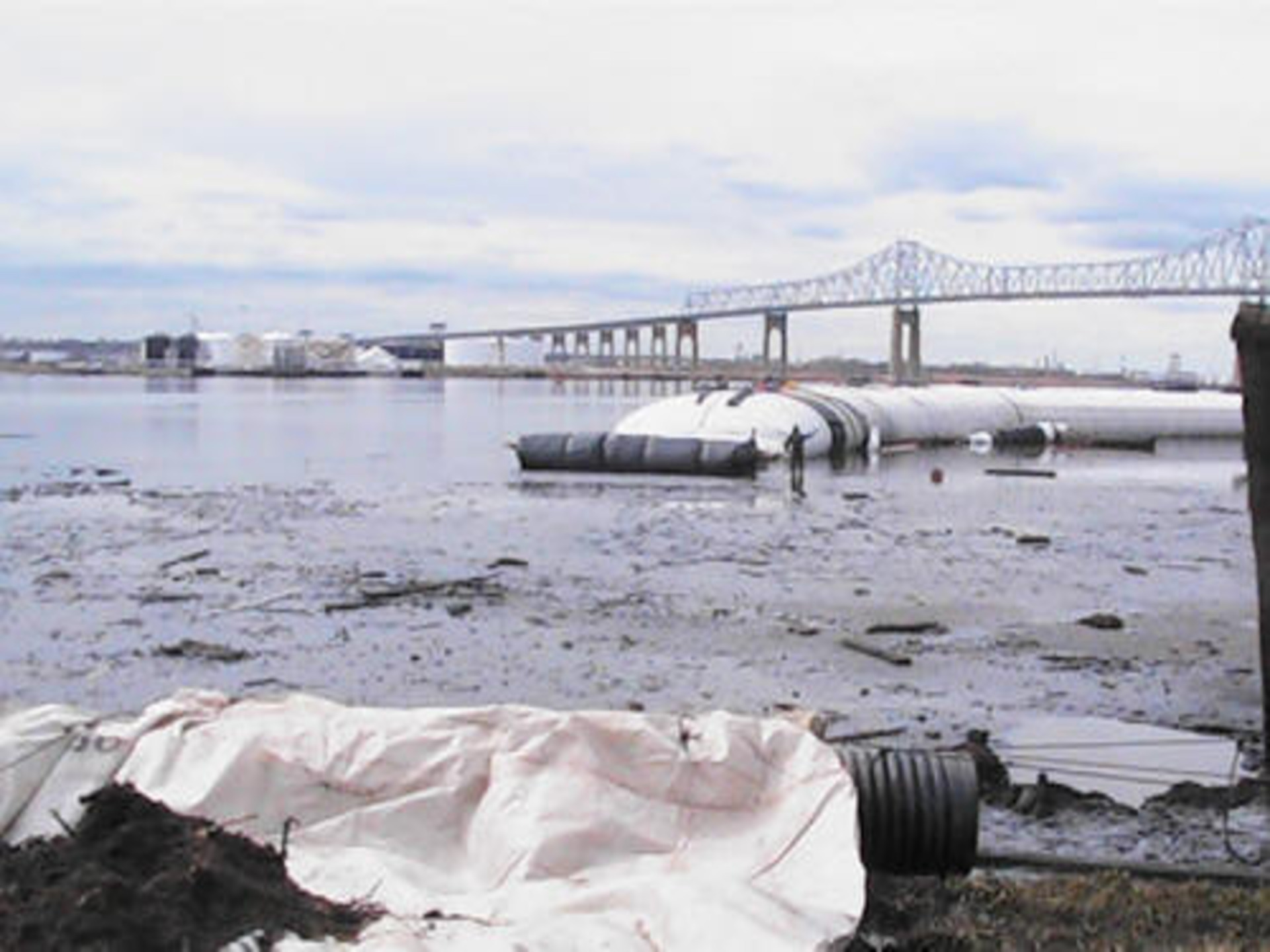
35.) A few culverts were placed beneath the AquaDams to allow some water to pass through during the duration project.
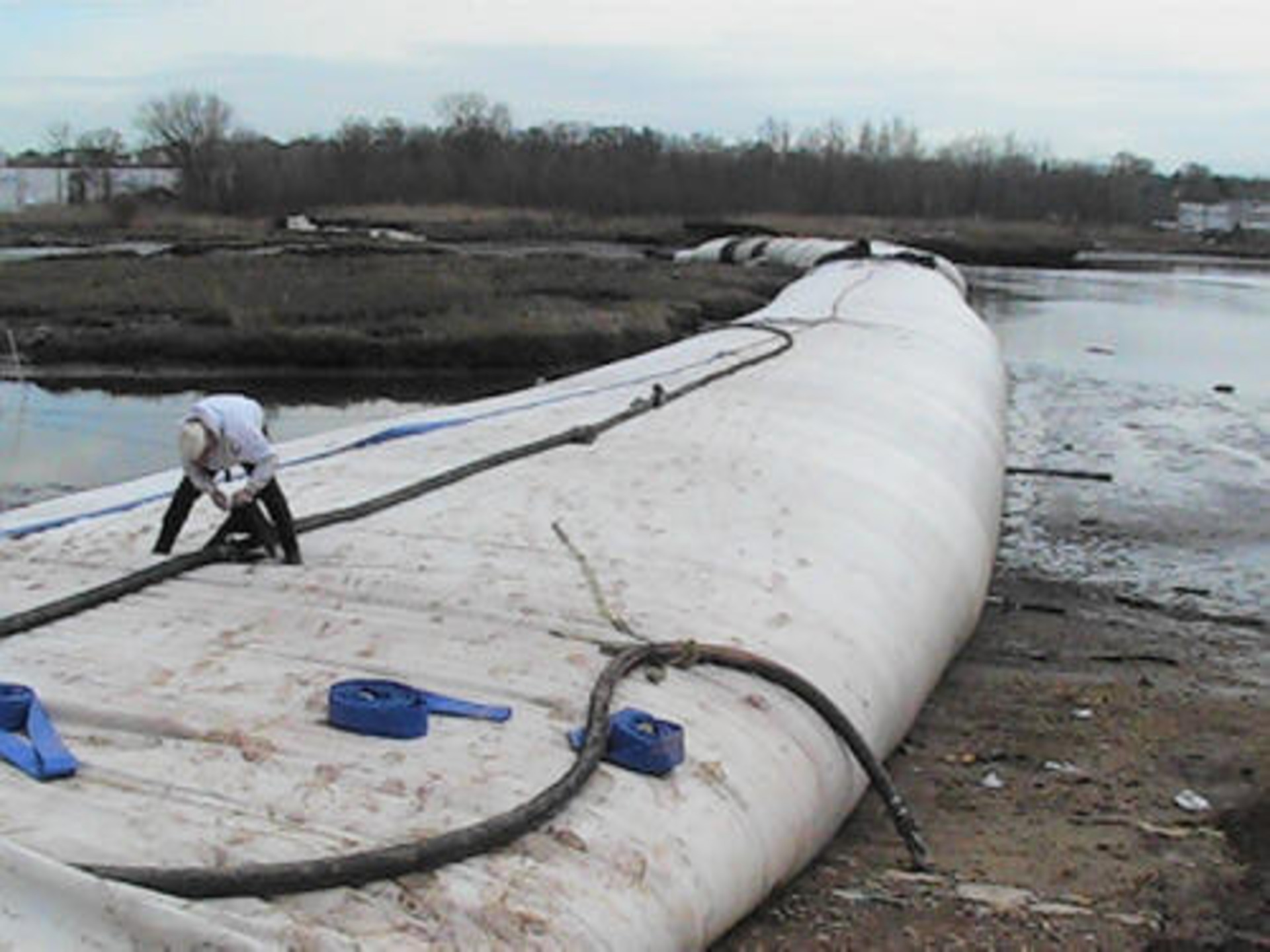
36.) Workers use the outer sleeve material and rope to tie off whatever may be needed of to be.

37.) The water source and pumping power, how large and many, will determine the time for installation. It is recommend to use similar pumps for each fill-tube. Turning the pump(s) down that is/are filling the fill-tube on the inside of the turn (while making the turn) will help.
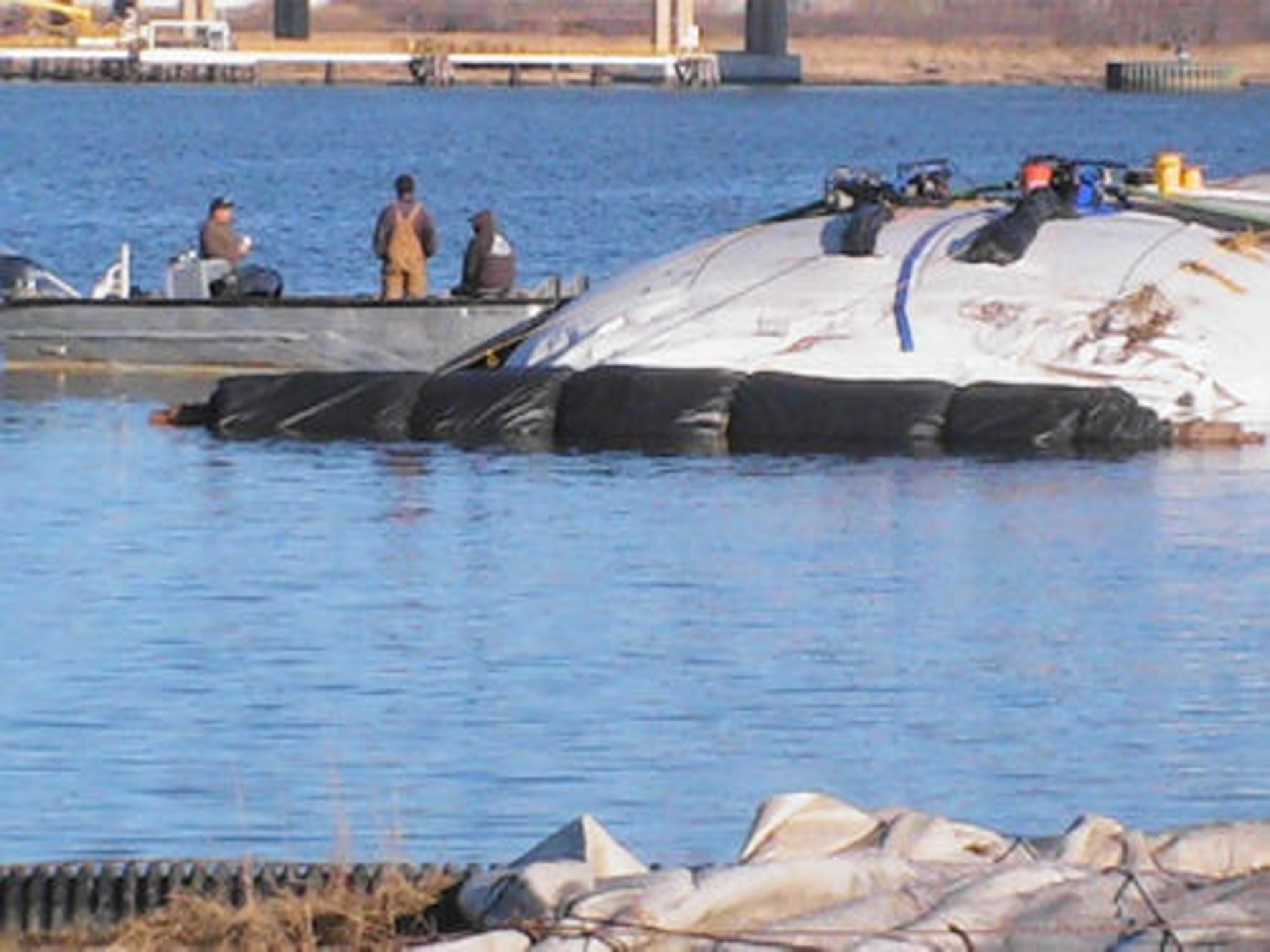
38.) Ropes have been tied to the bottom of the filling AquaDam, run over top of the roll, and secured back to the outer sleeve material atop of the full AquaDam, while it was being filled with water. The ropes are used to hold back the roll, while the unrolled length fills and gains head above the surrounding water.
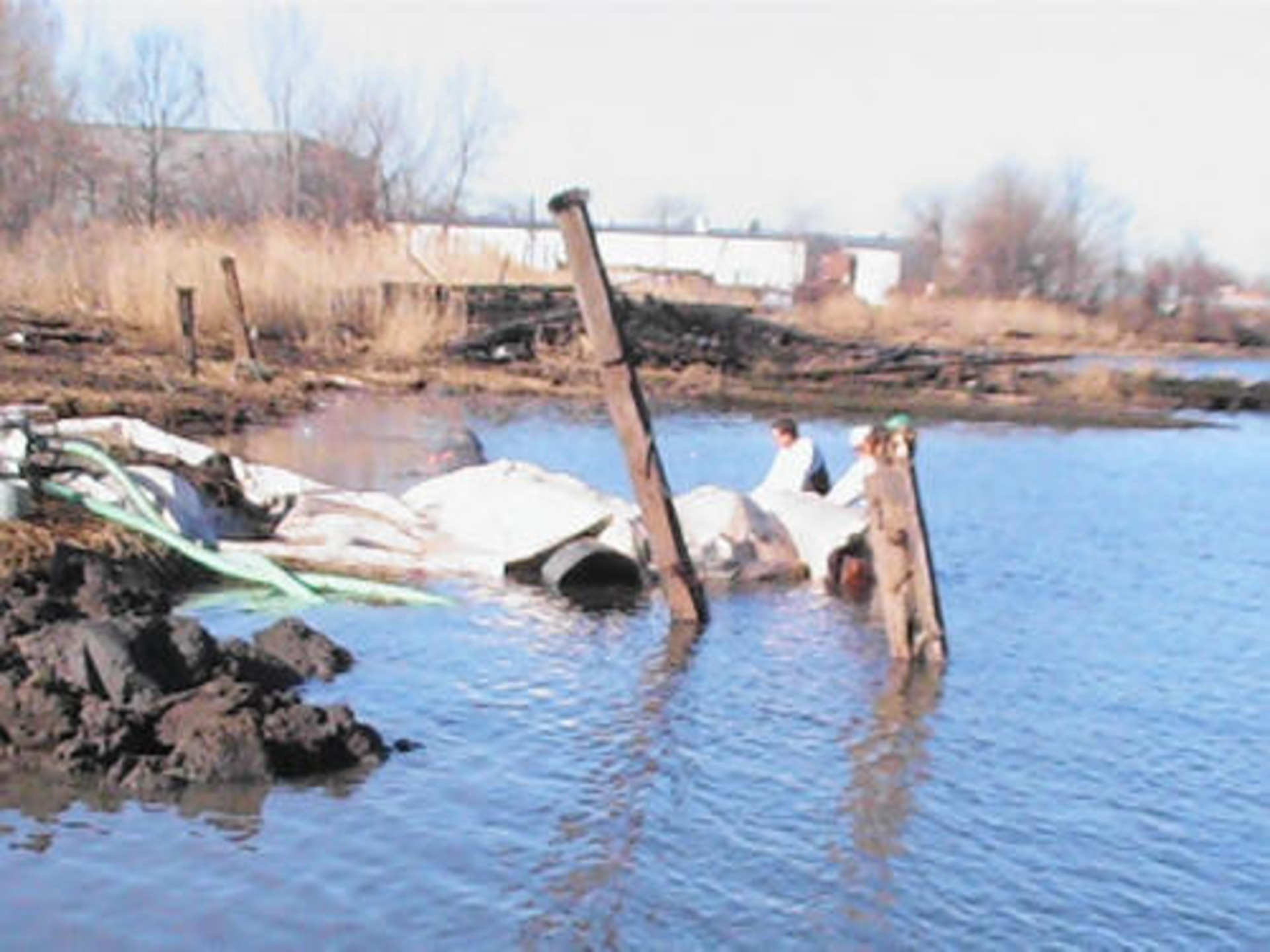
39.) Workers have started a support AquaDam from the ending bank of where the main AquaDams will end. The main AquaDams will be installed on the far side of this support dam.

40.) Workers hold the roll end while the support AquaDam fills with water.
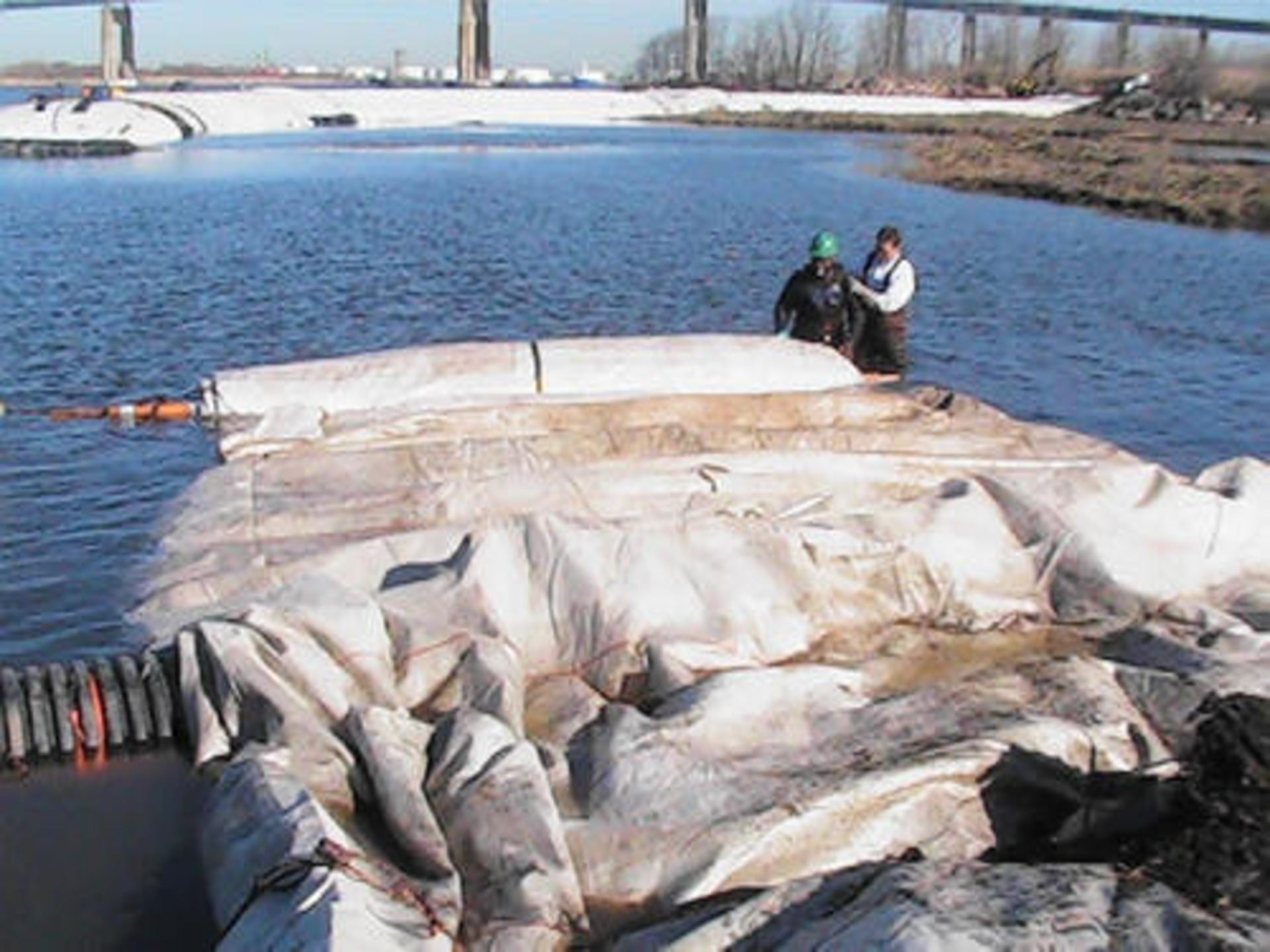
41.) AquaDams are constructed using lightweight and flexible materials, allowing them to float when empty in deep enough water.
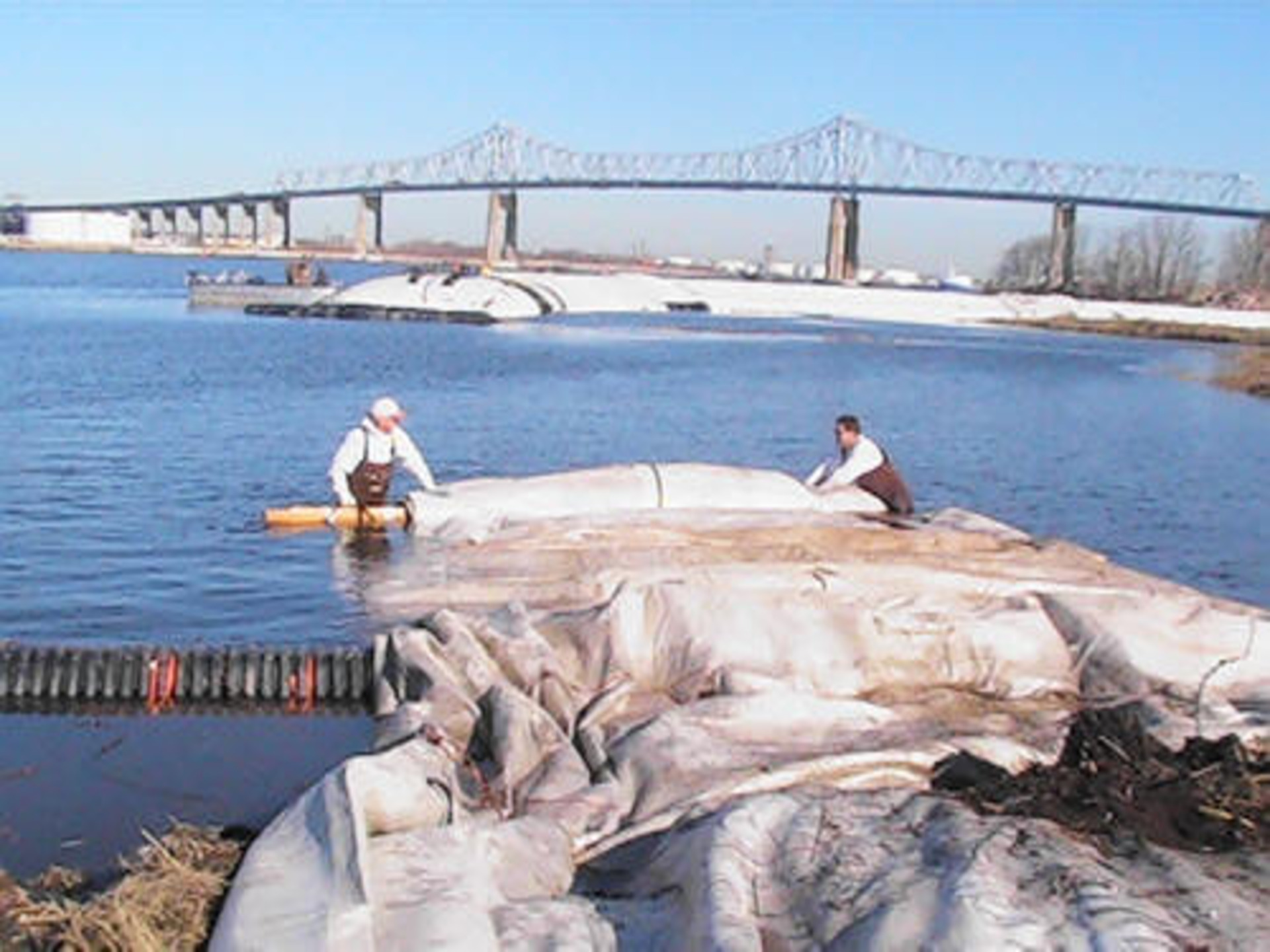
42.) Workers control where the AquaDam will be installed by pushing and pulling on the roll end. The beam in the center of the roll works great to tie too, push, or pull on.
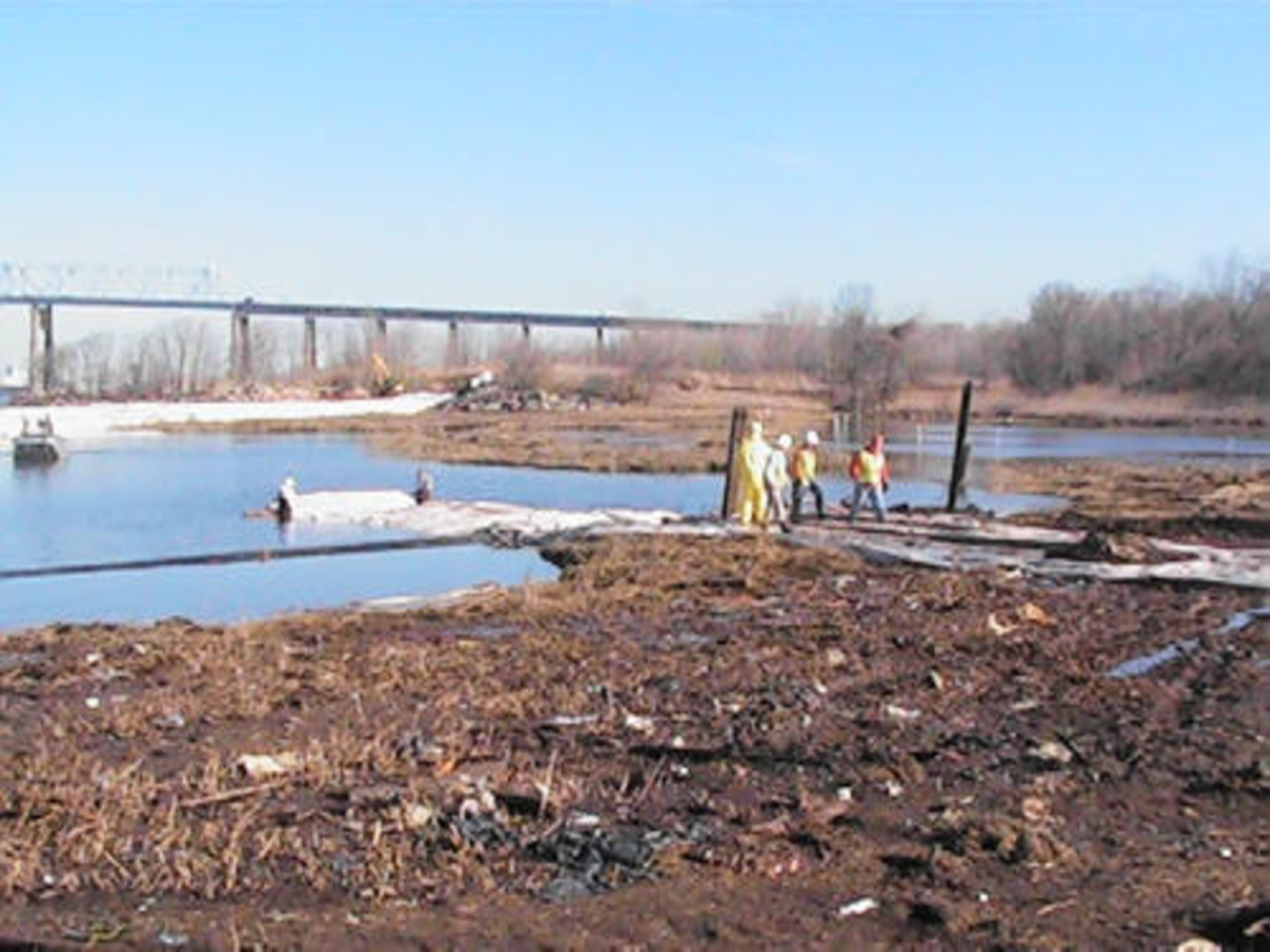
43.) Looks like it is high tide and the AquaDams are being installed smoothly.
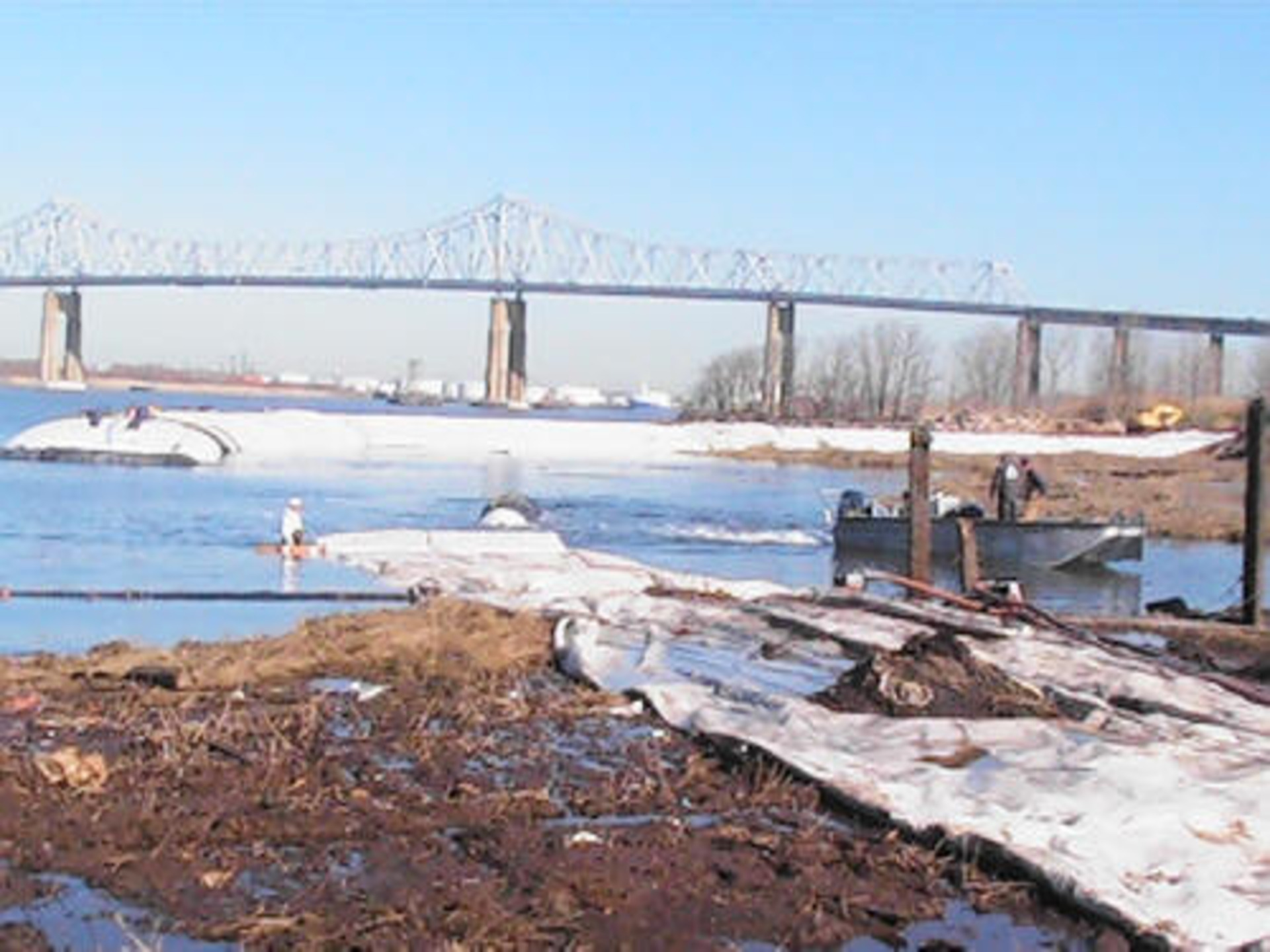
44.) Boats can be used to push or pull an AquaDam into position. It is highly recommended to use an impeller versus a propeller, as the latter may cause damage to an AquaDam.
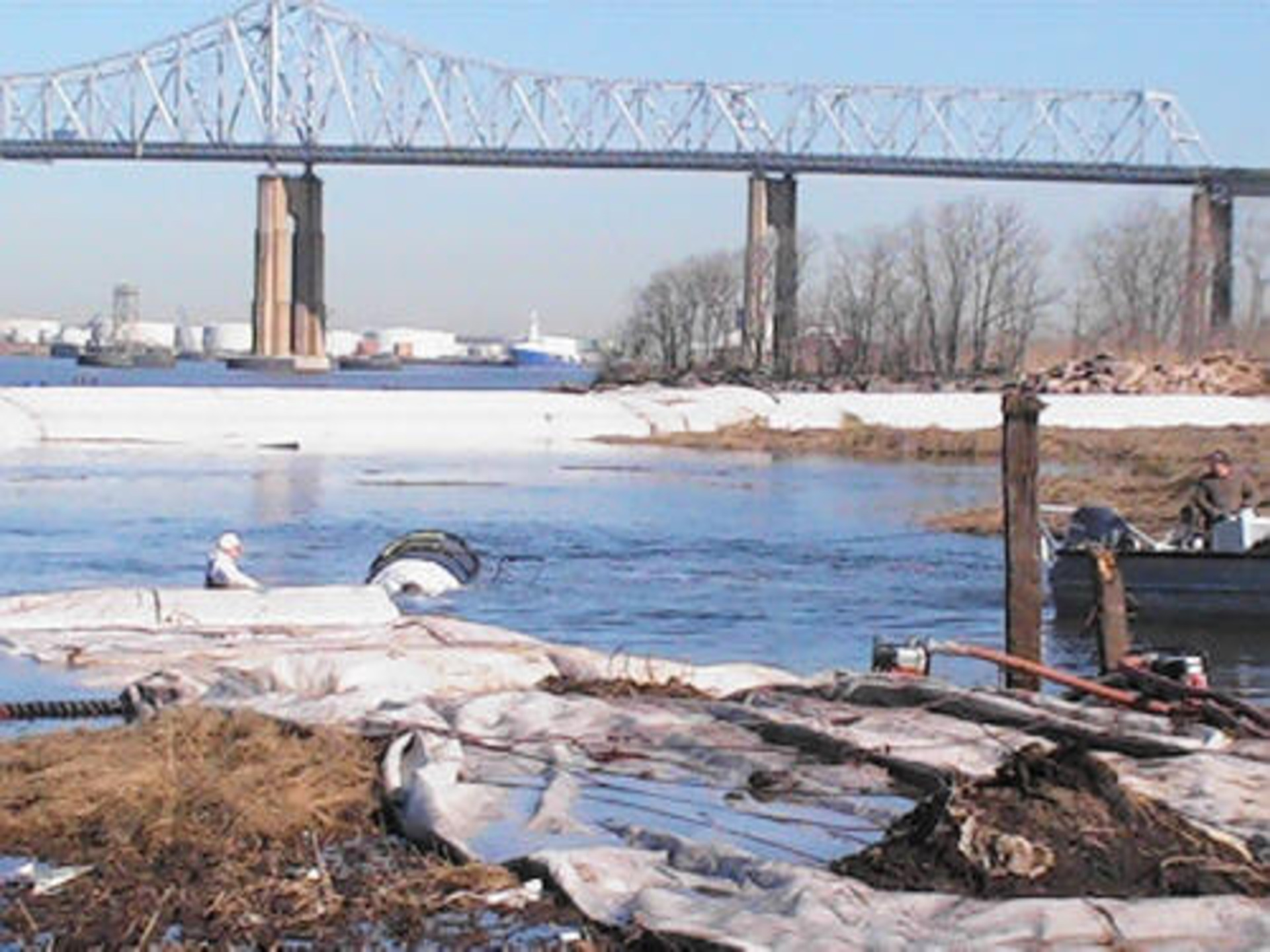
45.) AquaDams come rolled on wooden beams. This way, they are as compact as possible, as well as being able to float during installation. Workers were able to pull the rolled up AquaDam through the water to the desired position.
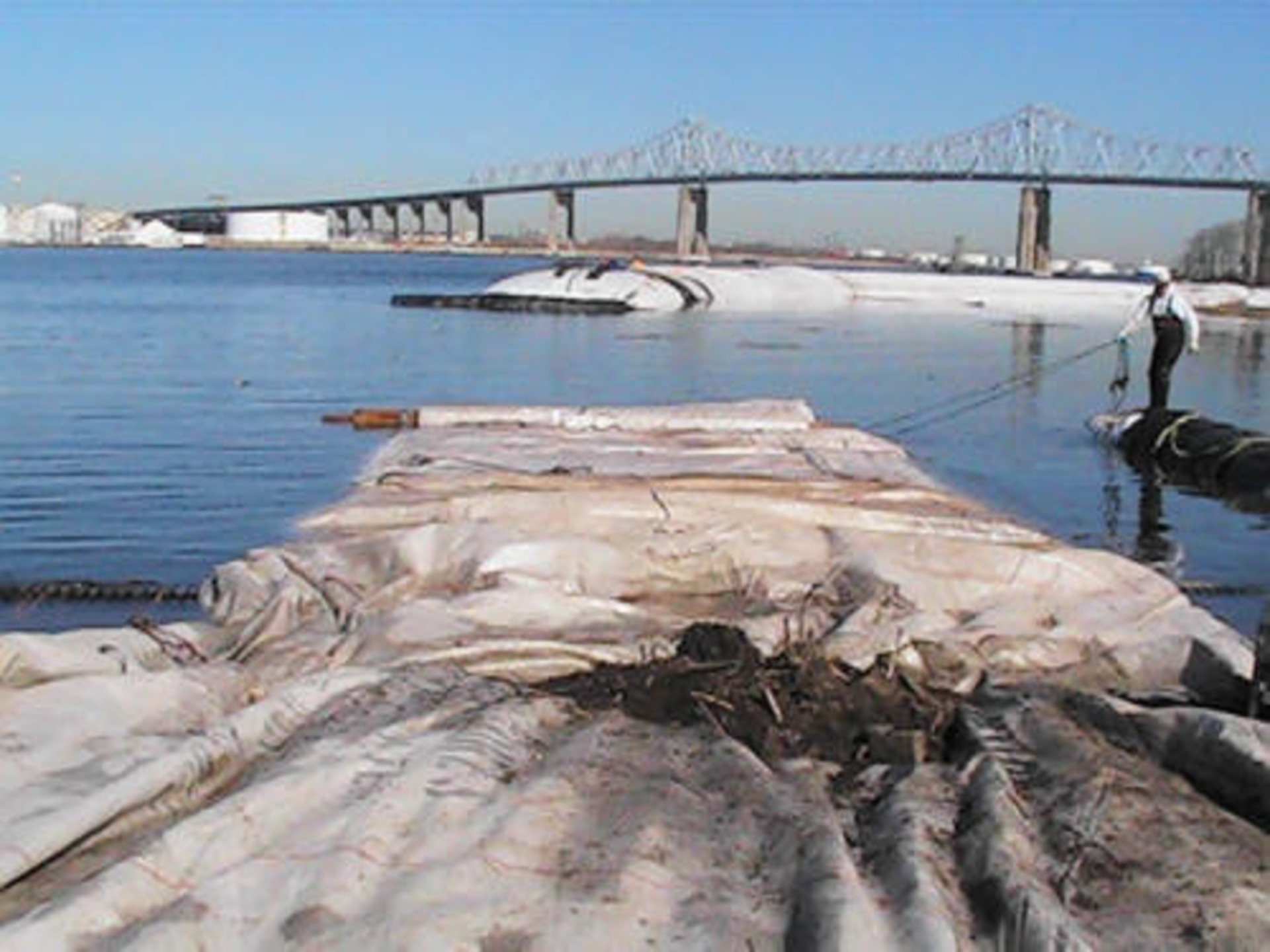
46.) A worker pulls on a rope attached to the beam to help position the AquaDam as it is filled with water.

47.) The support AquaDam continues to fill.
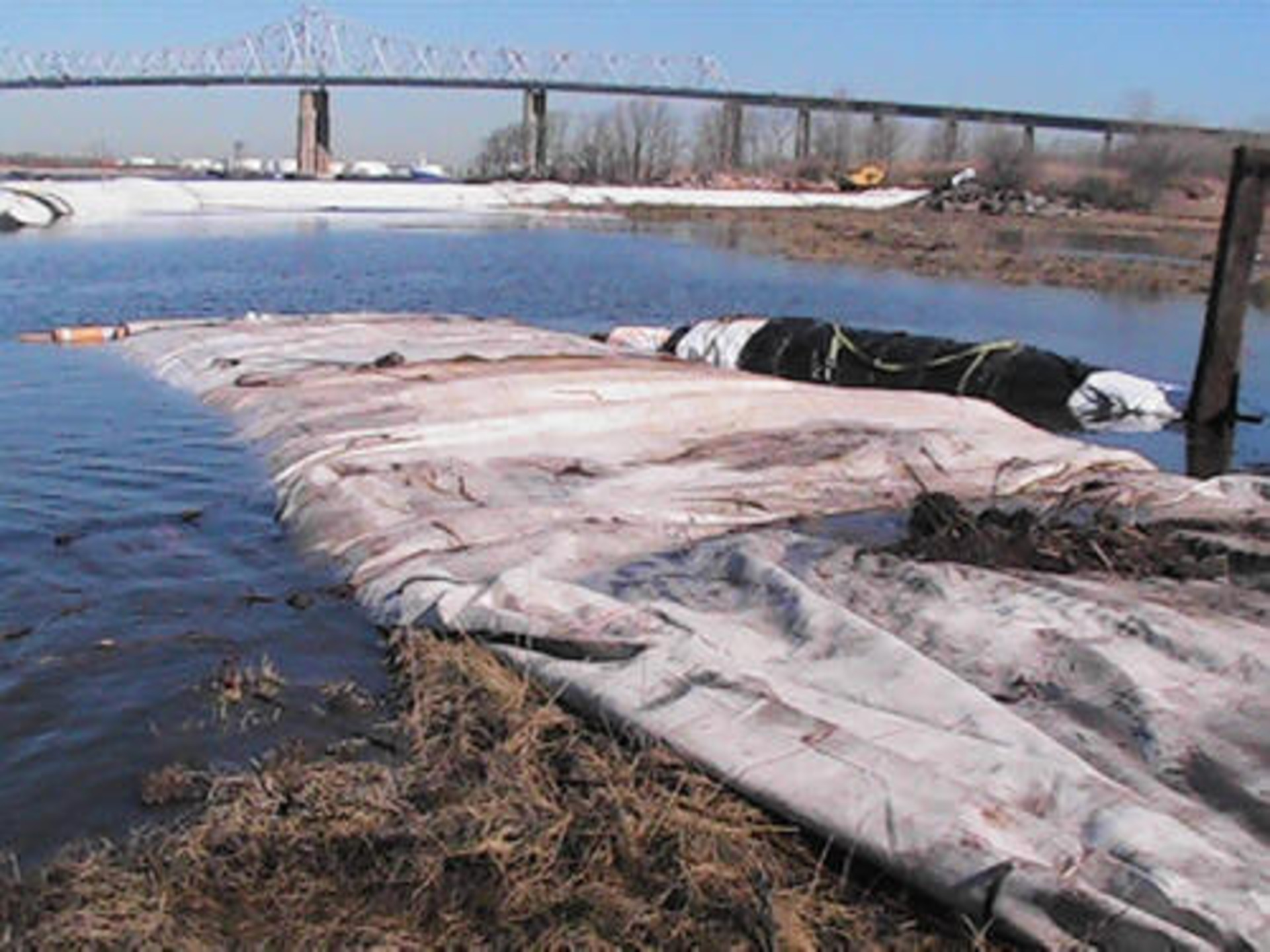
48.) The high tide water has covered the culvert that was previously above the water level.
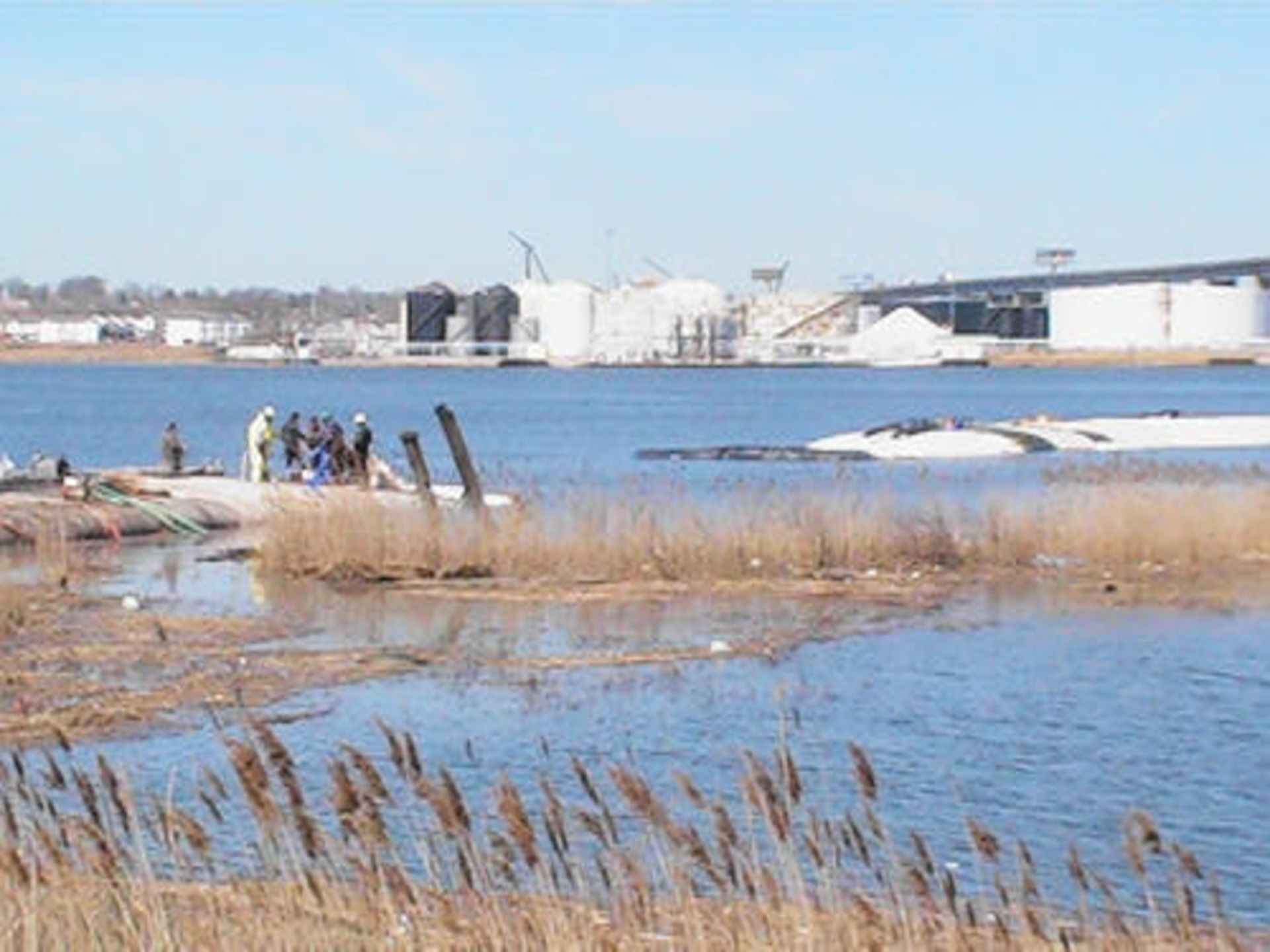
49.) Workers prepare the next support AquaDam to be installed, atop the first one just installed.
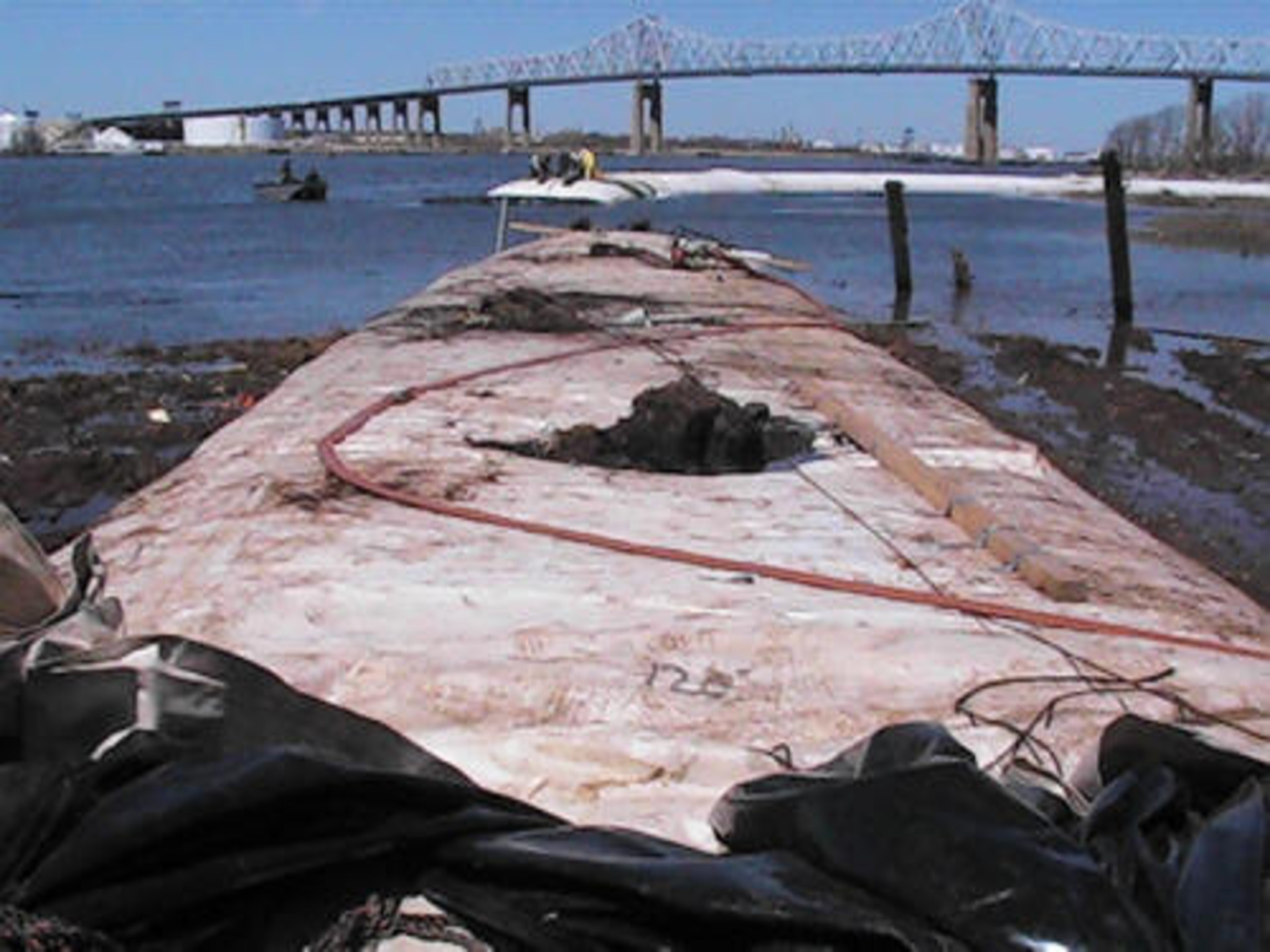
50.) Workers have moved pumps back out to the main AquaDams, to begin filling them again.
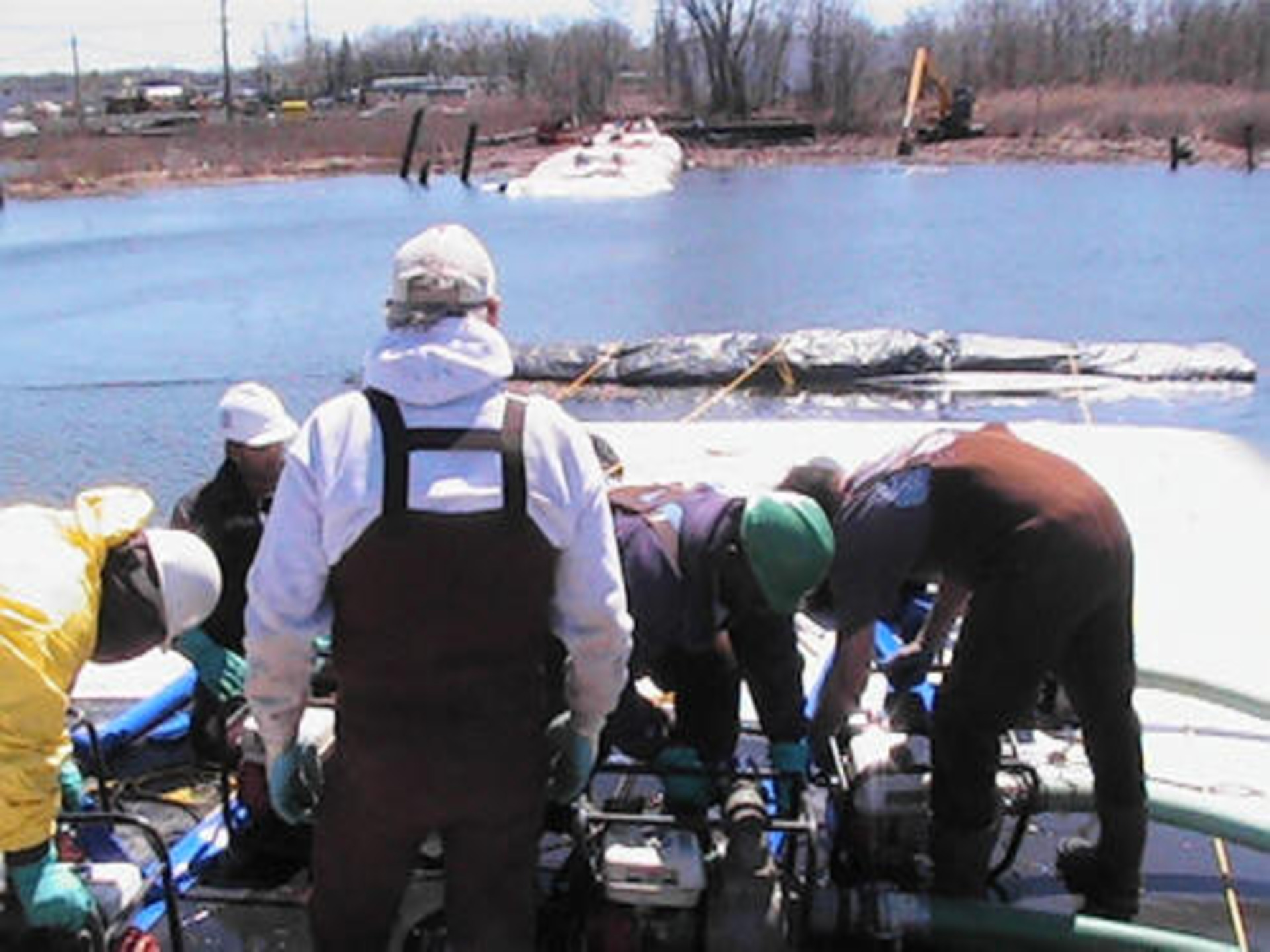
51.) The work area has almost been isolated by the AquaDam cofferdam system.
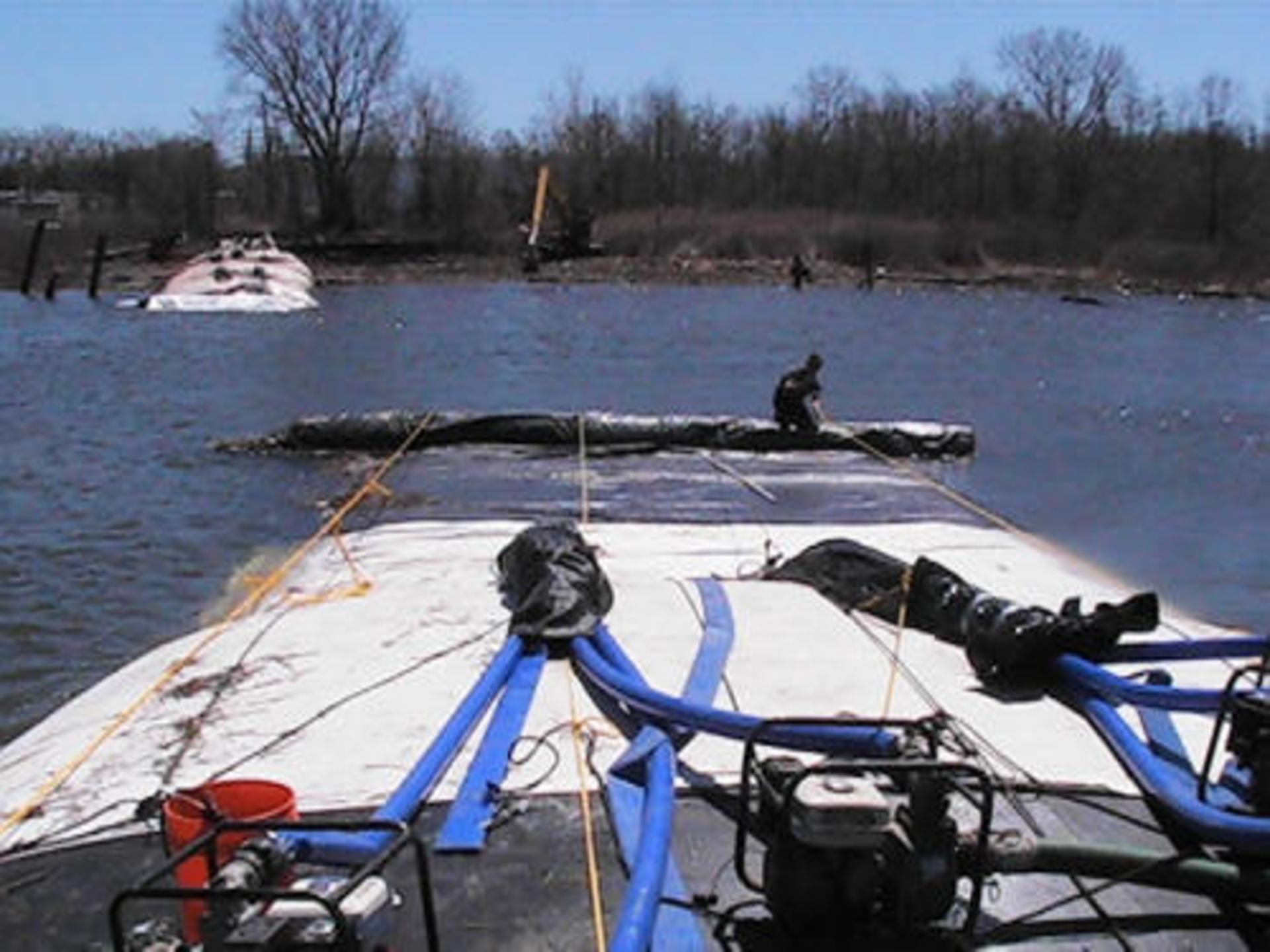
52.) Workers must adjust the tension in the ropes as the AquaDam fills. After the unrolled length has a few inches of head above the surrounding water, workers release a few feet of rope unrolling a few feet of length, then hold the ropes tight again and repeat the process until the dam reaches its ending bank.
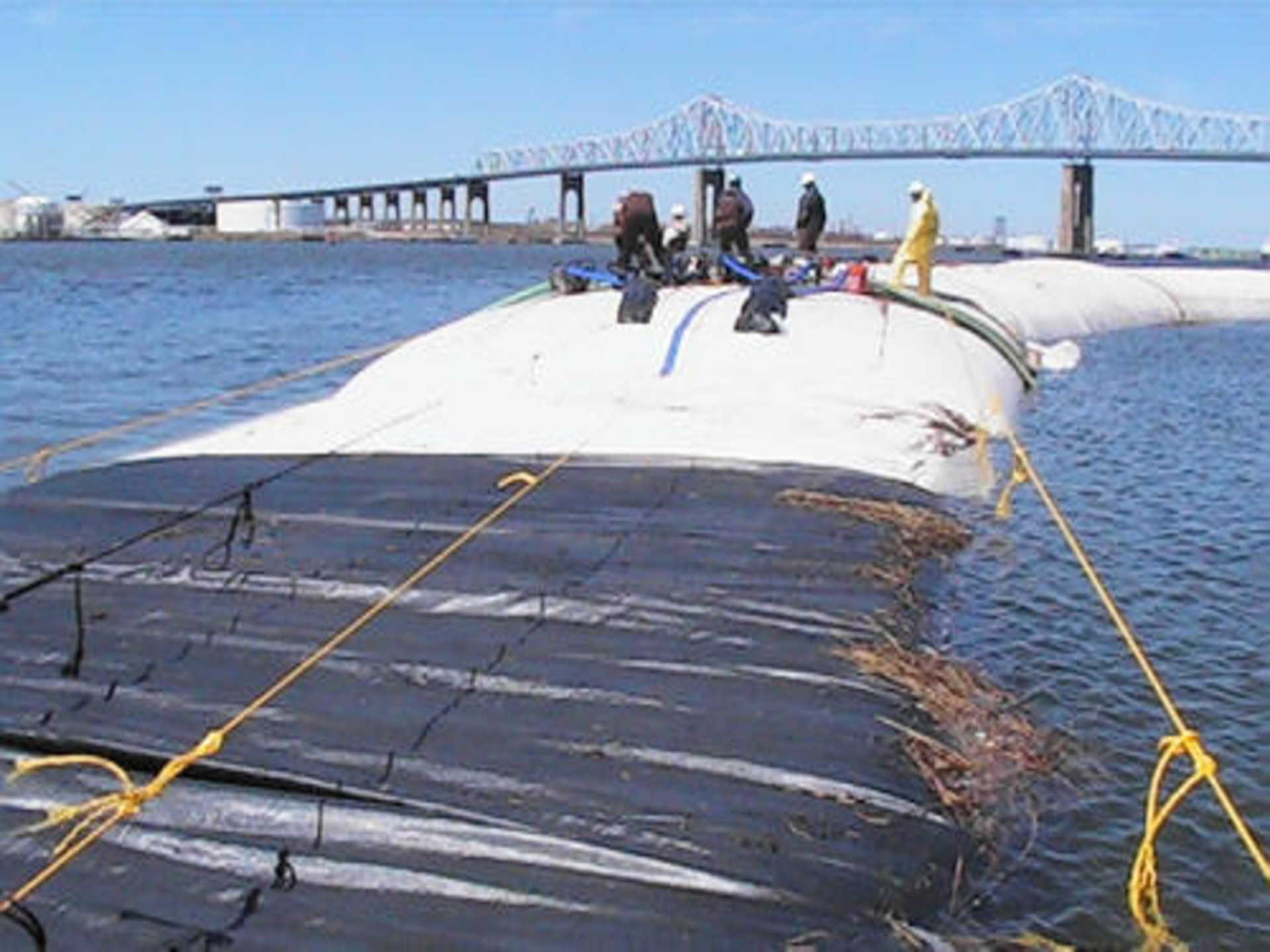
53.) The next AquaDam in the main cofferdam system continues to be filled with water from both Mill Creek and Arthur Kill.
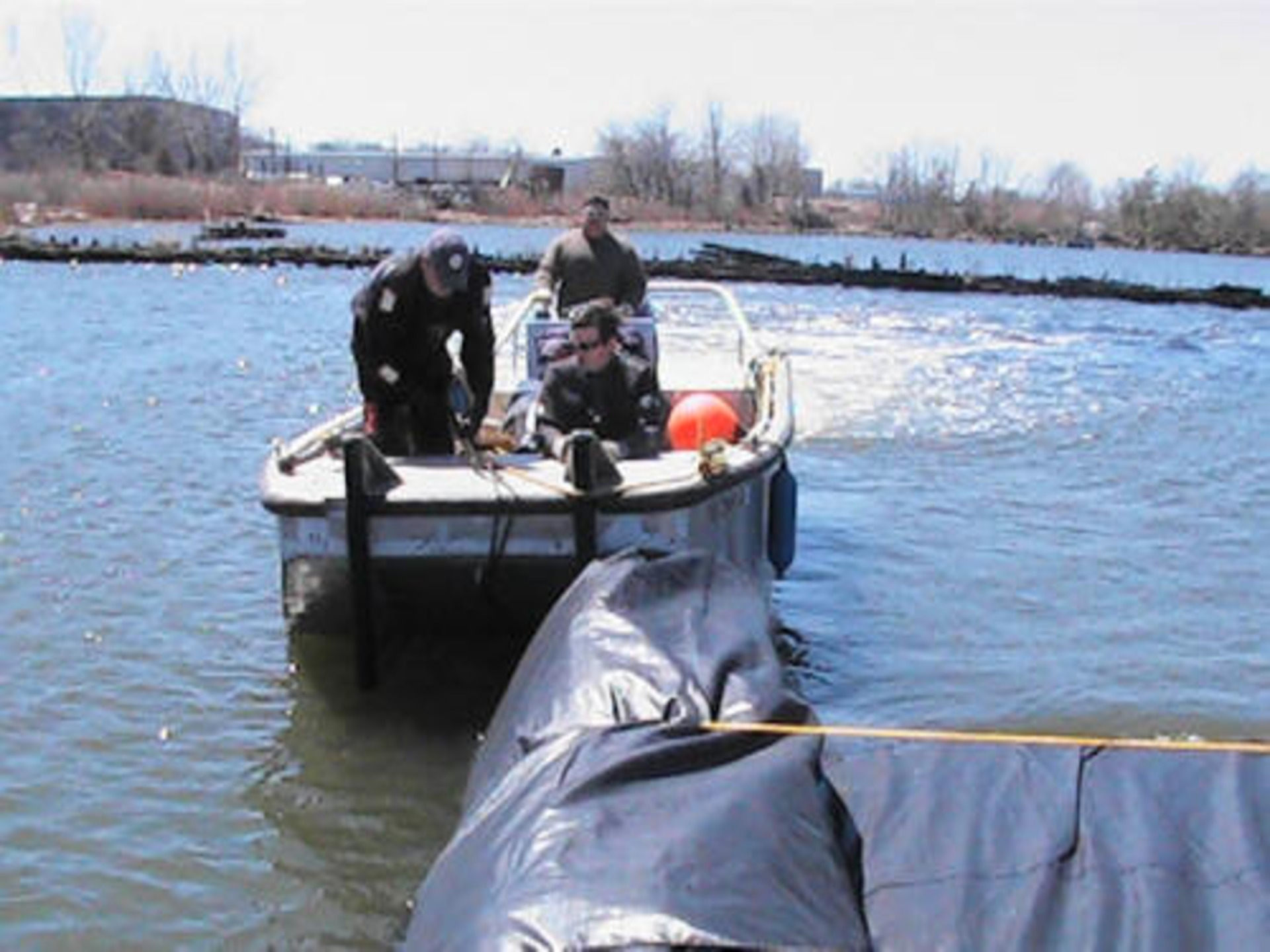
54.) Workers used a boat to push on the beam in the center of the roll to aid with making a turn.
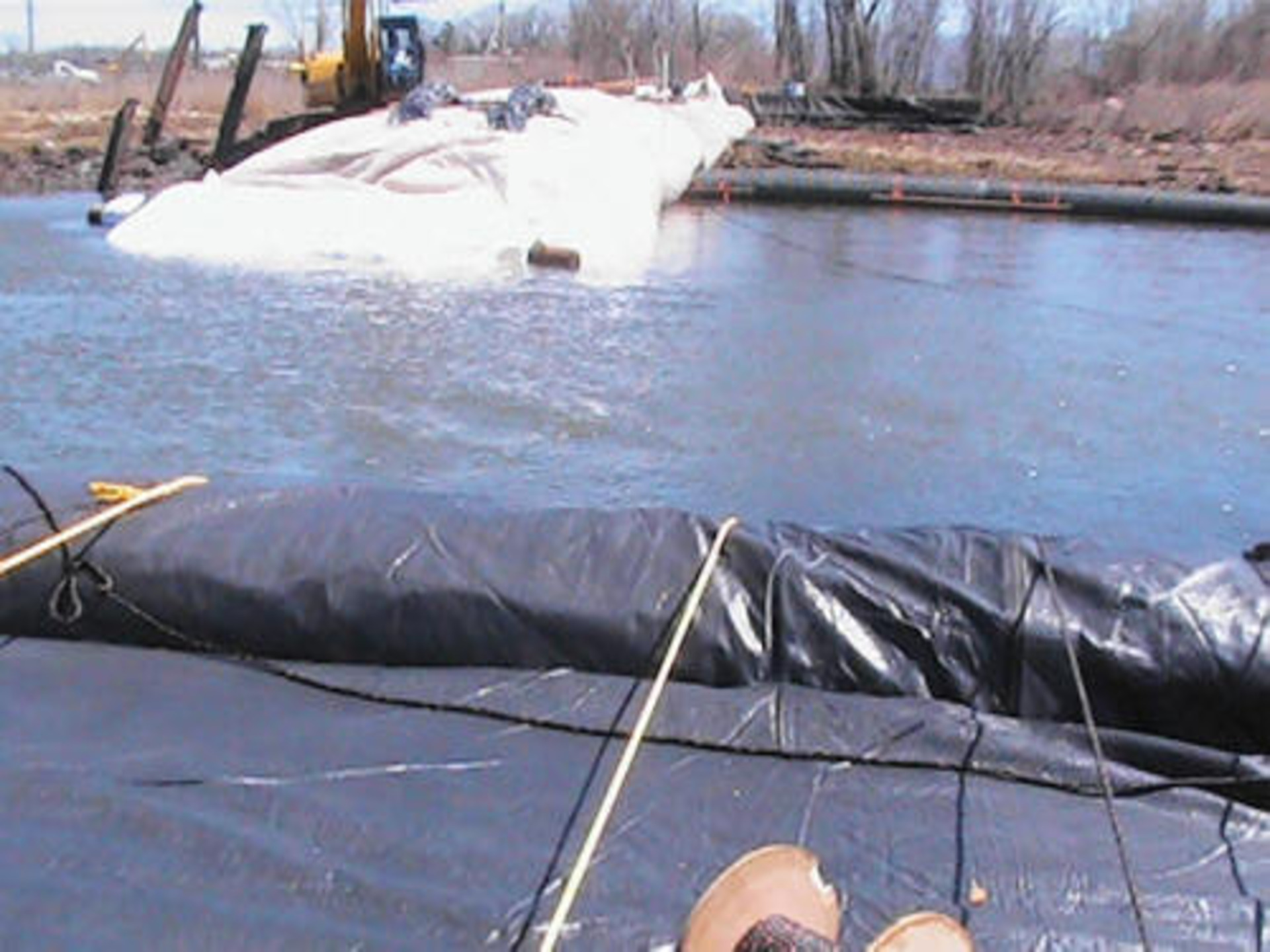
55.) The main AquaDam continues to fill as it encroaches the support AquaDams.
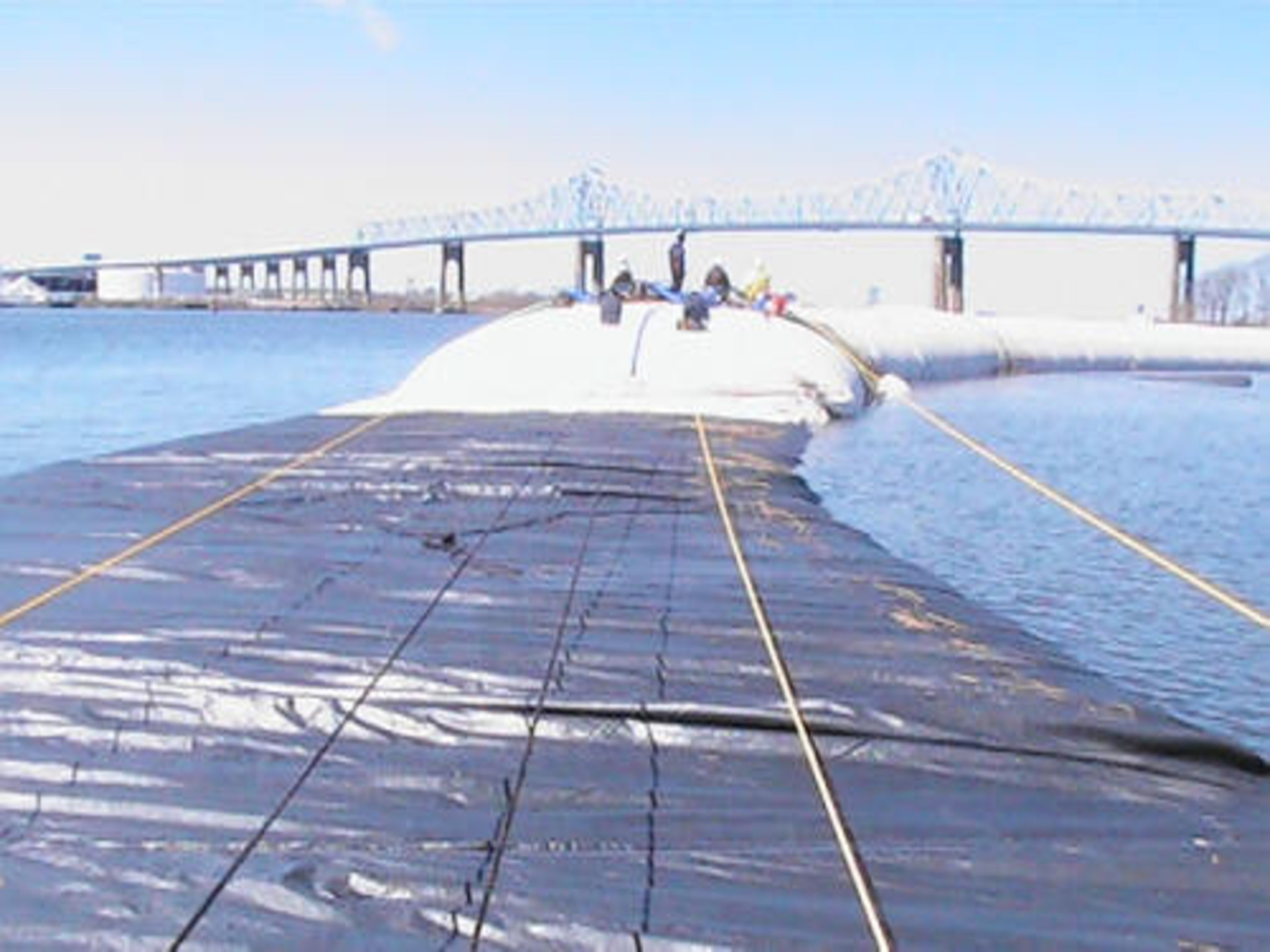
56.) There is only a few inches of head in the AquaDam, above the surrounding water, but it is enough to keep the unit in place as it is filled.
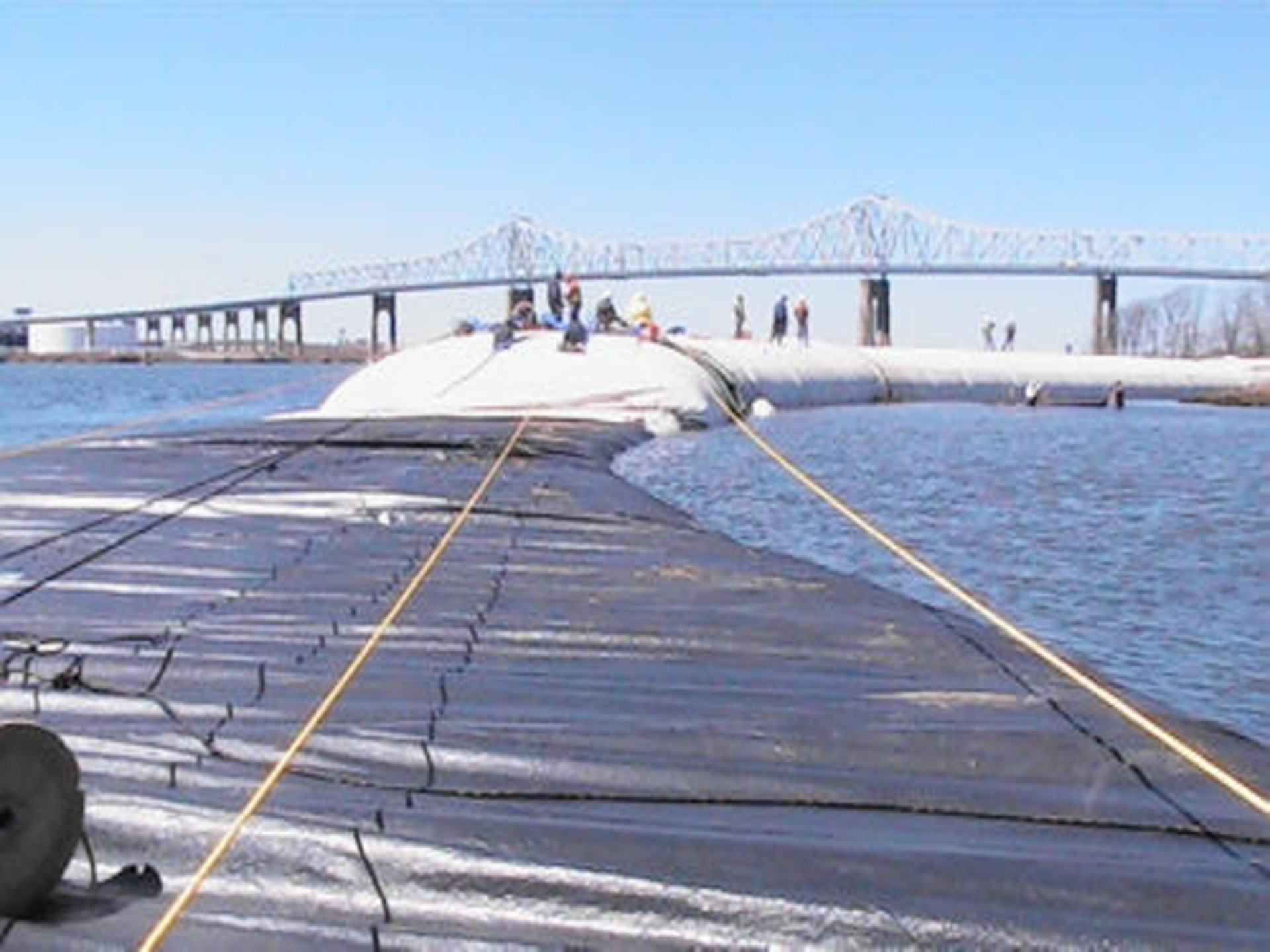
57.) Long lengths of rope are typically used when installing an AquaDam.
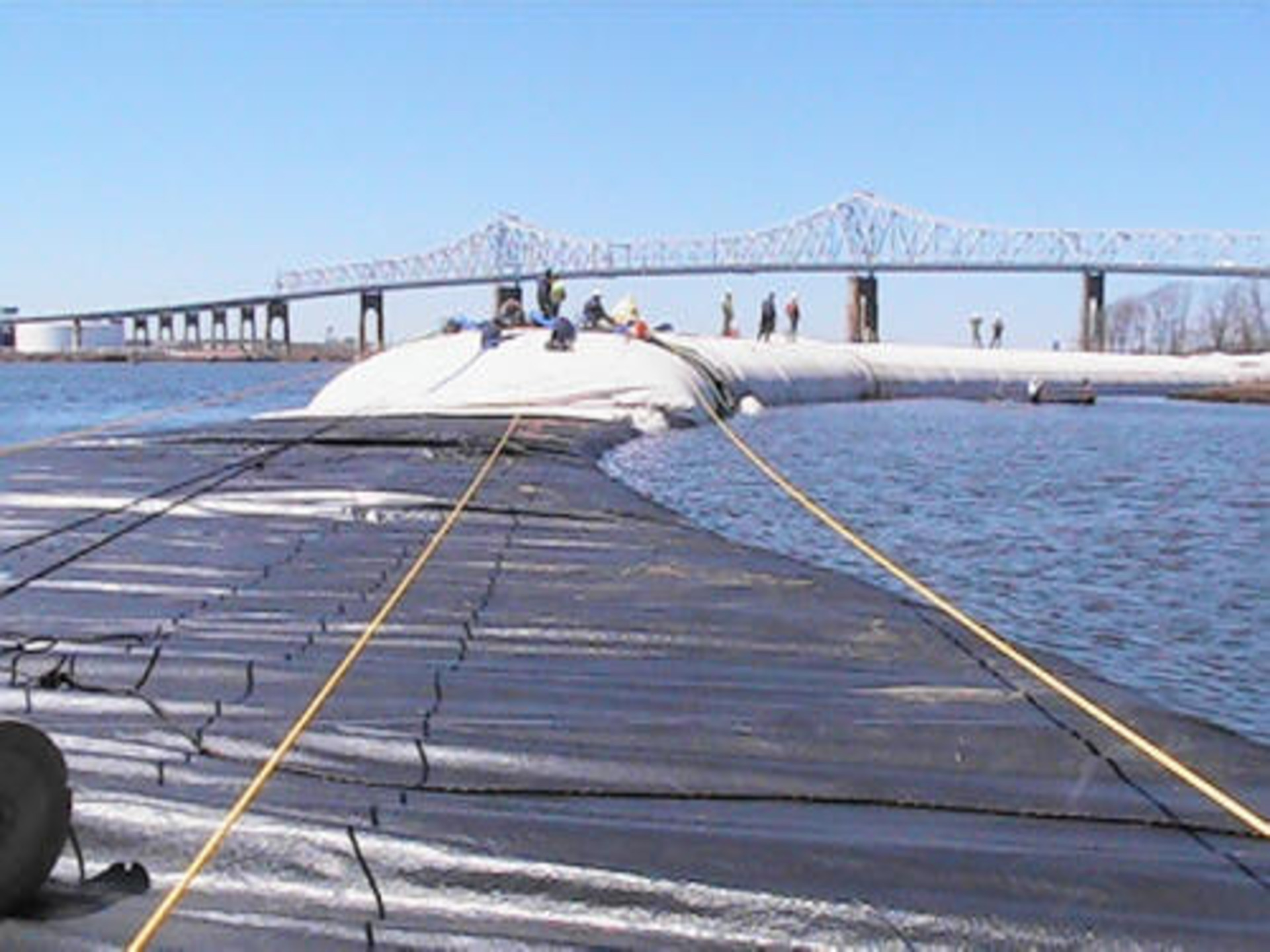
58.) The main AquaDam continues to fill.
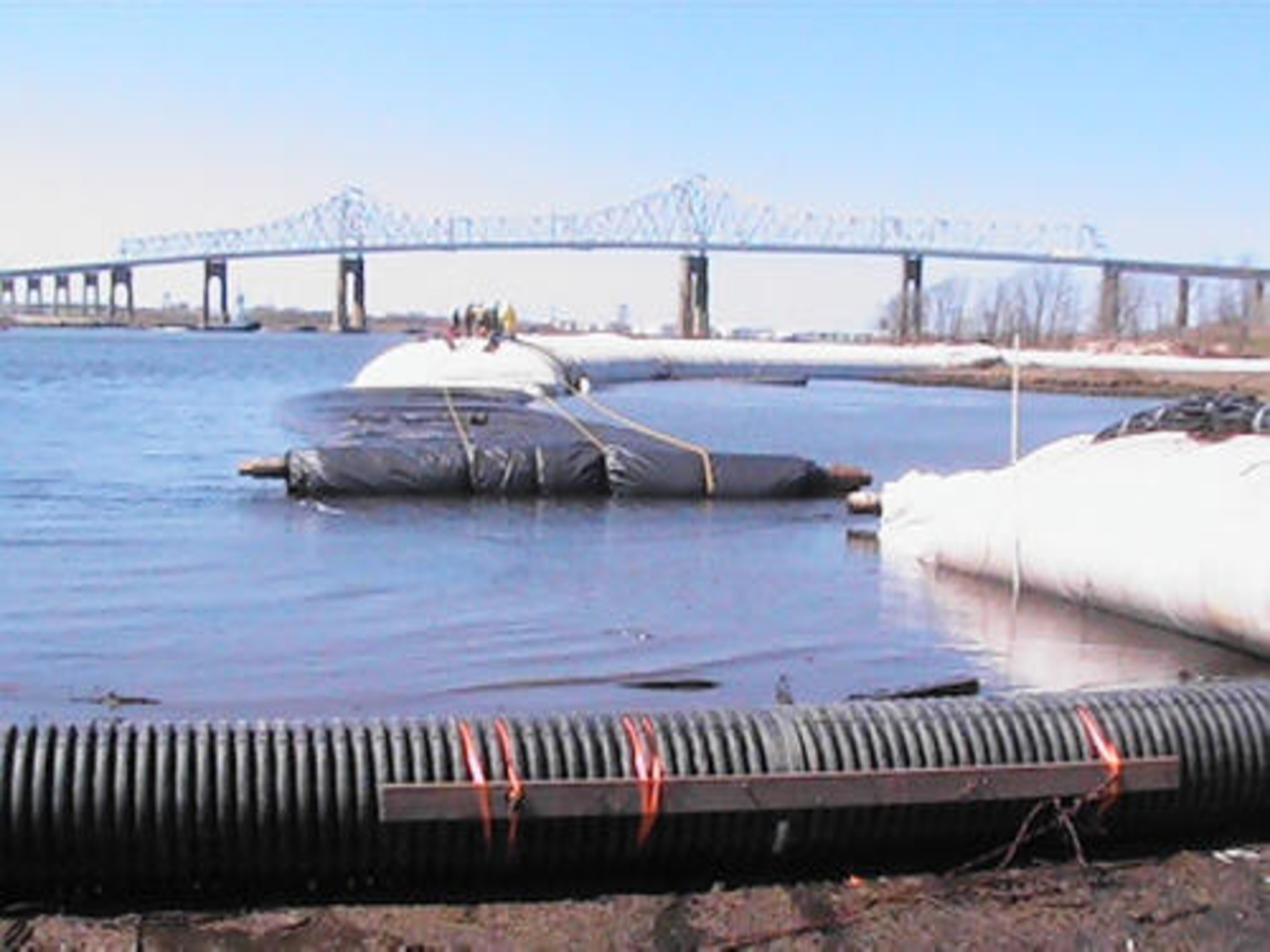
59.) The main AquaDam has almost unrolled to the support AquaDams, as the tide is going out.

60.) Mill Creek has almost been isolated from Arthur Kill.

61.) Here is the open end and fill-tubes of one AquaDam atop of another one without a connection collar. Ropes were used to help secure the two together instead.

62.) Here we can see how one of the AquaDams wrapped around one of the culverts. Running a smaller AquaDam under the culvert and larger AquaDam can help with seepage at this location.

63.) The roll of the main AquaDam has made it to the culvert located at the ending bank.

64.) Workers used an excavator to help lift the roll end of the AquaDam over the culvert pipe.

65.) As the AquaDam is filled, the water inside pushes on the inside of the roll, causing it to up roll. The filling AquaDam was trying to push the culvert out of the way.

66.) The roll end of the AquaDam has successfully made it over the culvert and will finish unrolling up its ending bank as it is filled.

67.) This AquaDam cofferdam system was installed in a horseshoe/”U” shape configuration.

68.) AquaDams less in height than the 12ft tall units were used finish the configuration and on the inner perimeter for additional support.

69.) The support AquaDams can be seen still being filled on the left hand side of the main AquaDams.
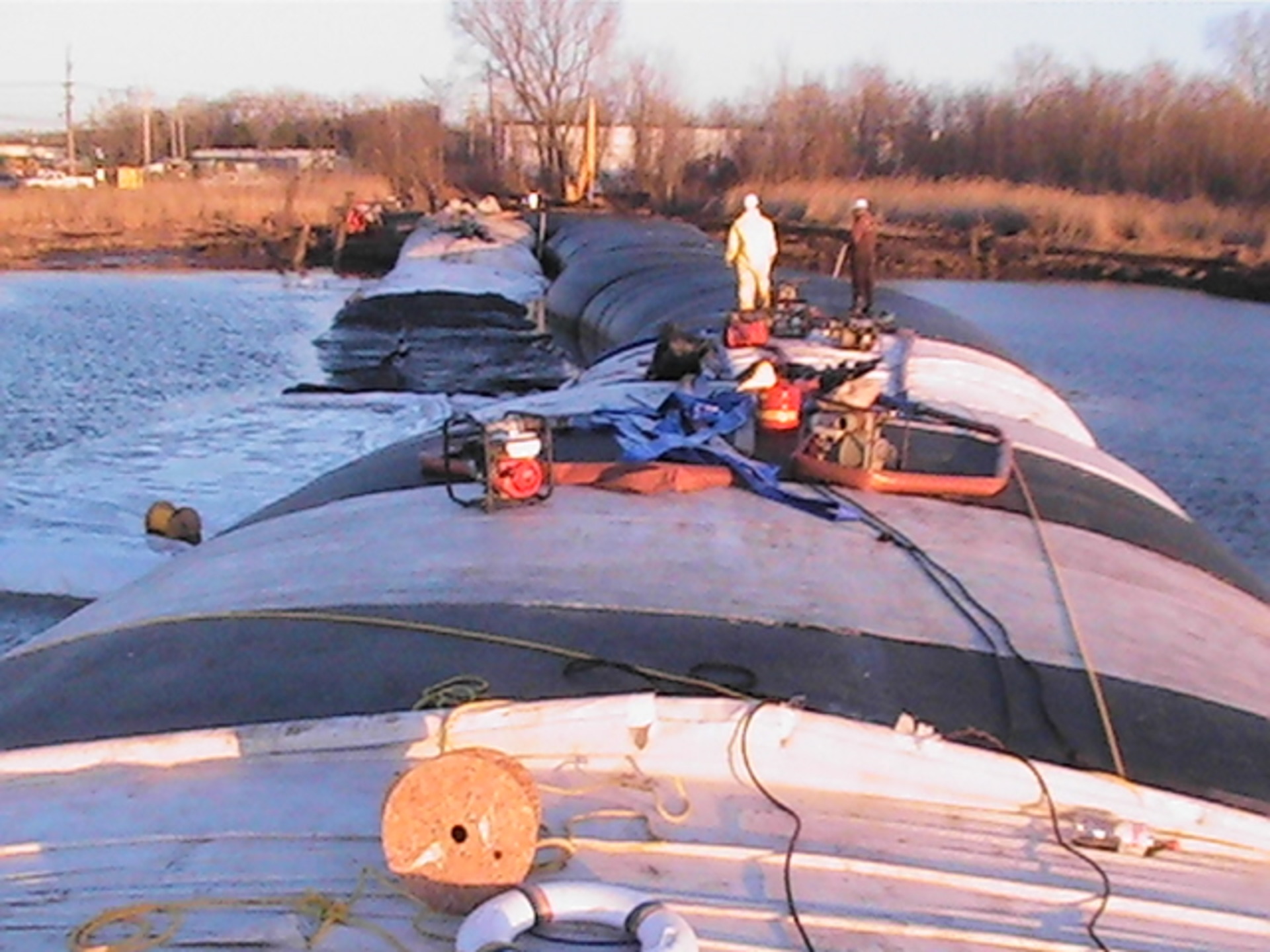
70.) This was a 12ft tall by 75ft long AquaDam with a connection collar that was specially sewn, so that a 10ft tall AquaDam could fit into it very snugly. The workers are standing on the 10ft tall AquaDam.

71.) The support AquaDams continue to fill.

72.) Looking back towards the old wreckage area, just South of Mill Creek.

73.) Looking at the AquaDam cofferdam system from Arthur Kill side. Wonderful job AquaDam!
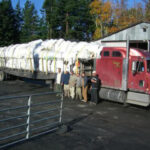

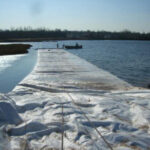
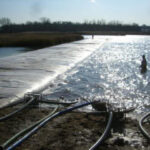
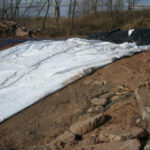
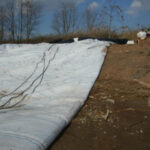



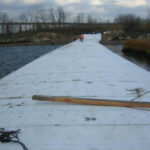
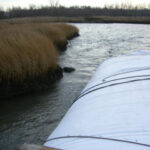
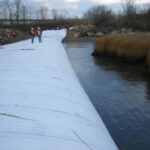
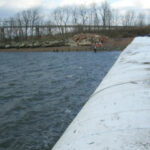
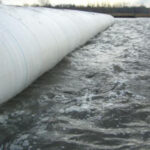
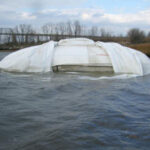
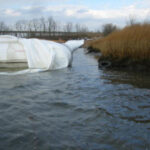
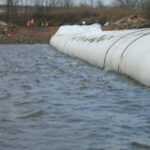
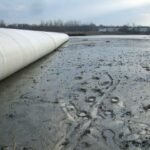
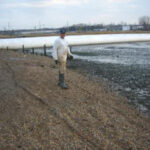
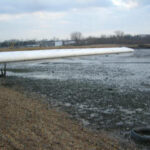
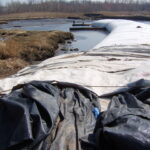
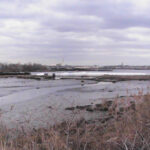

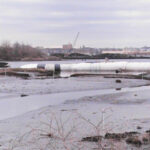
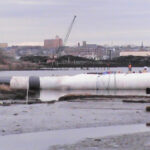
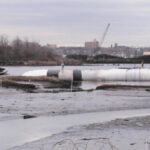
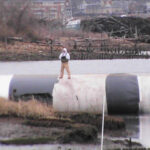
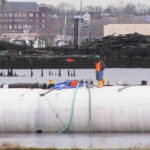
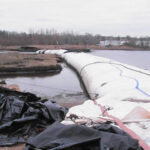


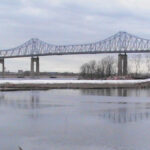

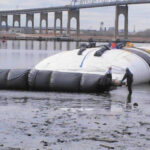
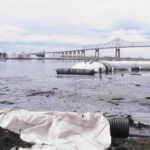
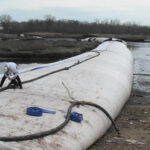
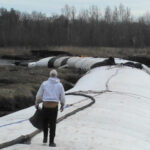
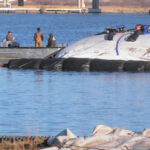
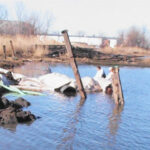
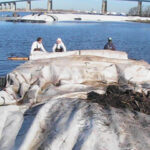

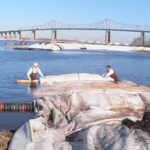
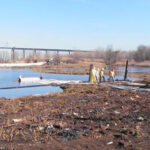
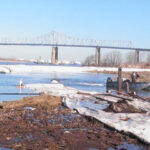
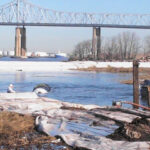


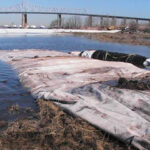
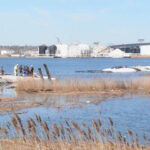
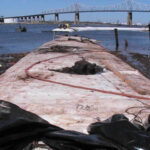
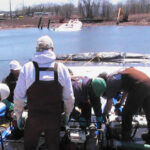
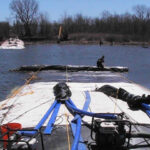
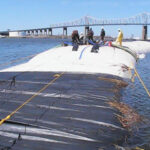
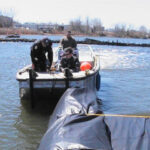

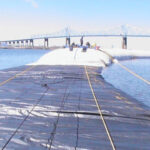
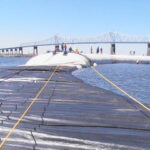
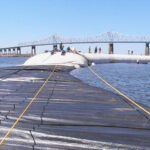
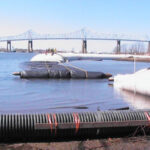
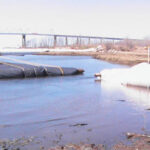


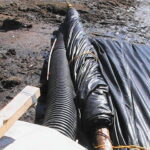
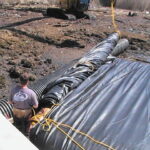
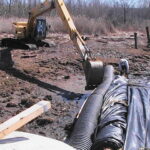
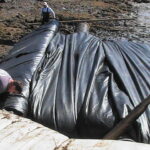
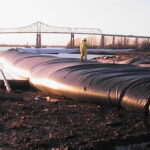
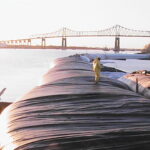

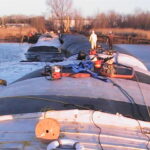
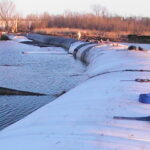

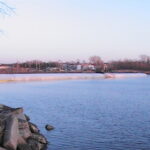
Various Height AquaDams, Environmental Remediation, Tidal Flats, Arthur Kill, Mill Creek, Horseshoe/”U” Shape Configuration
